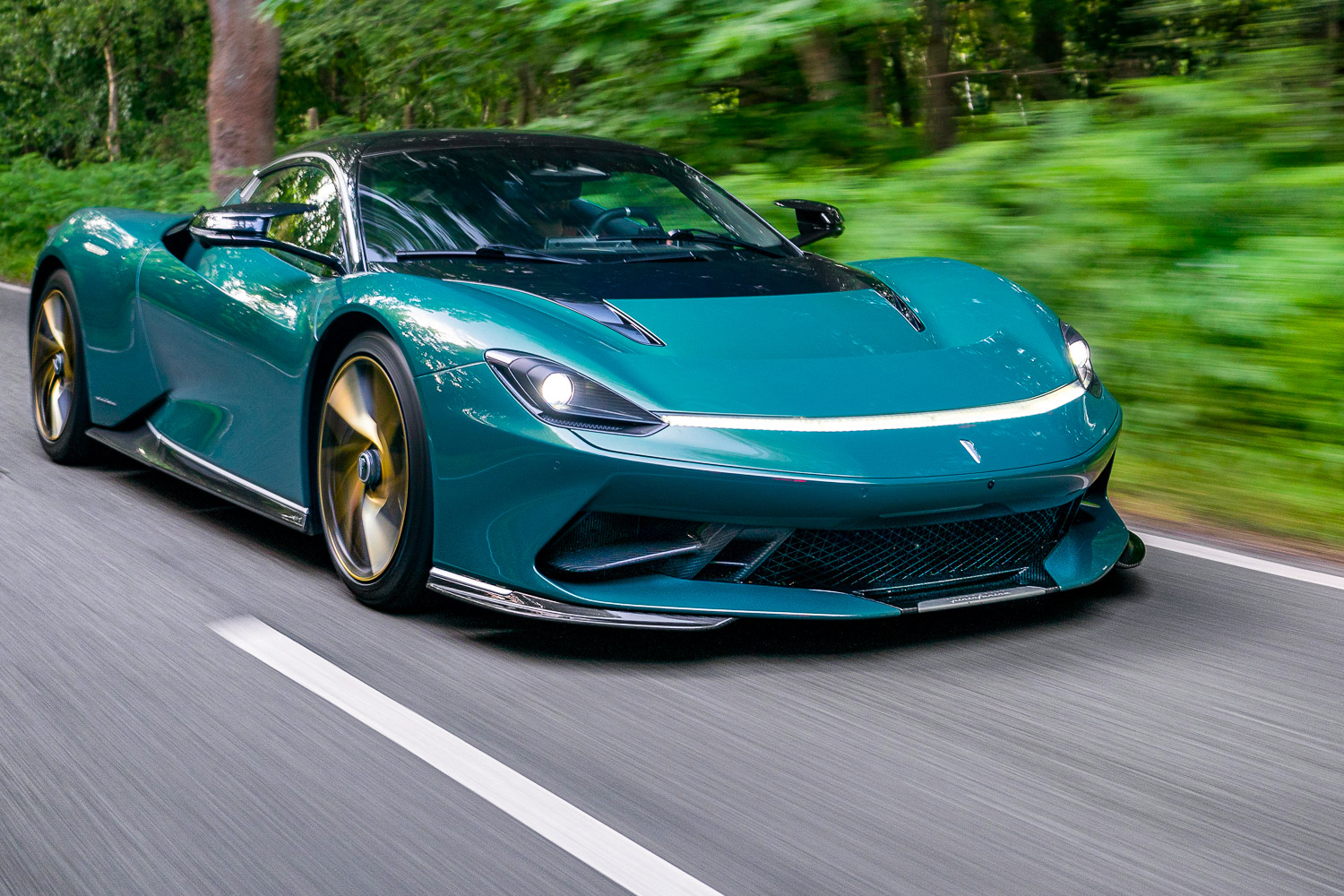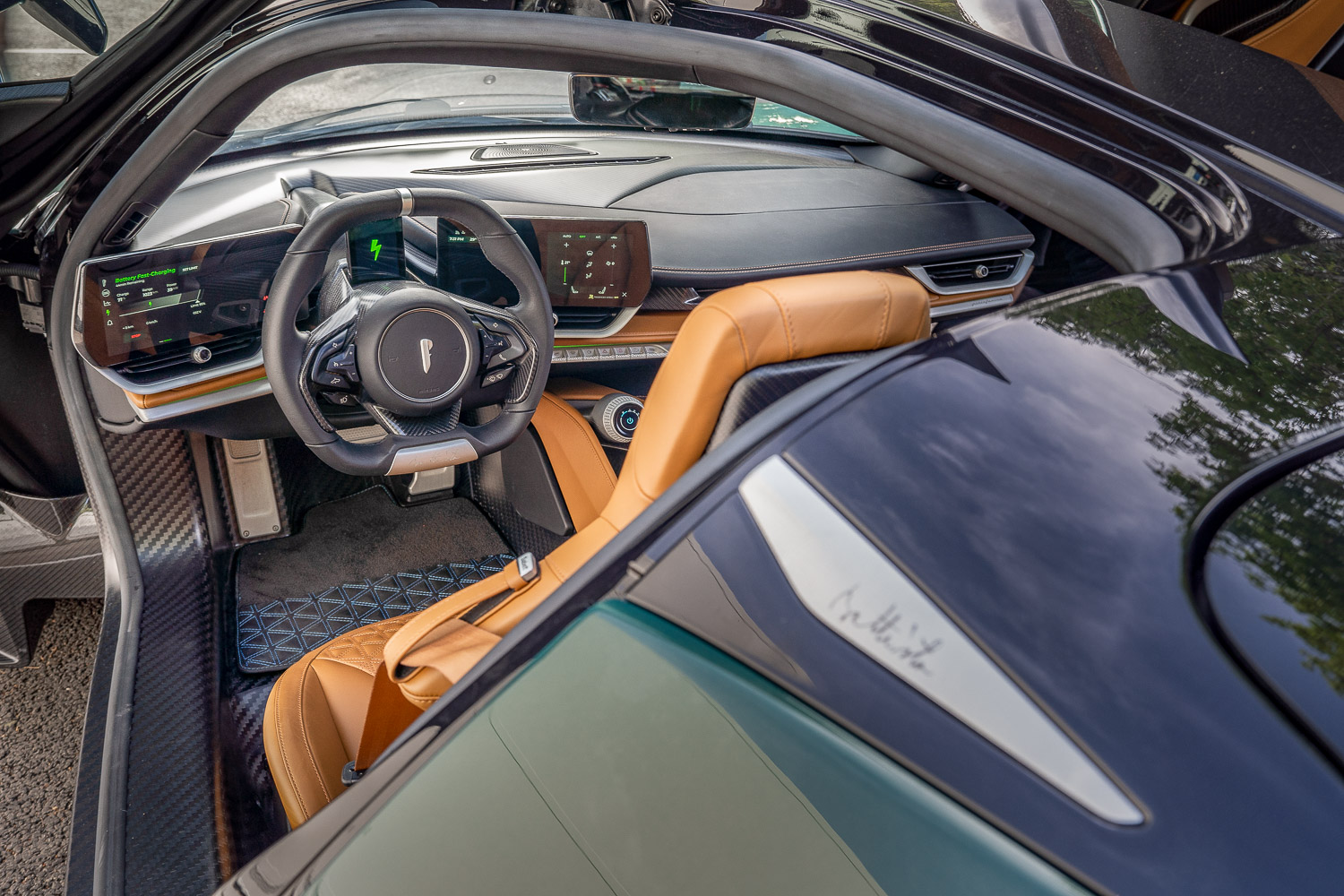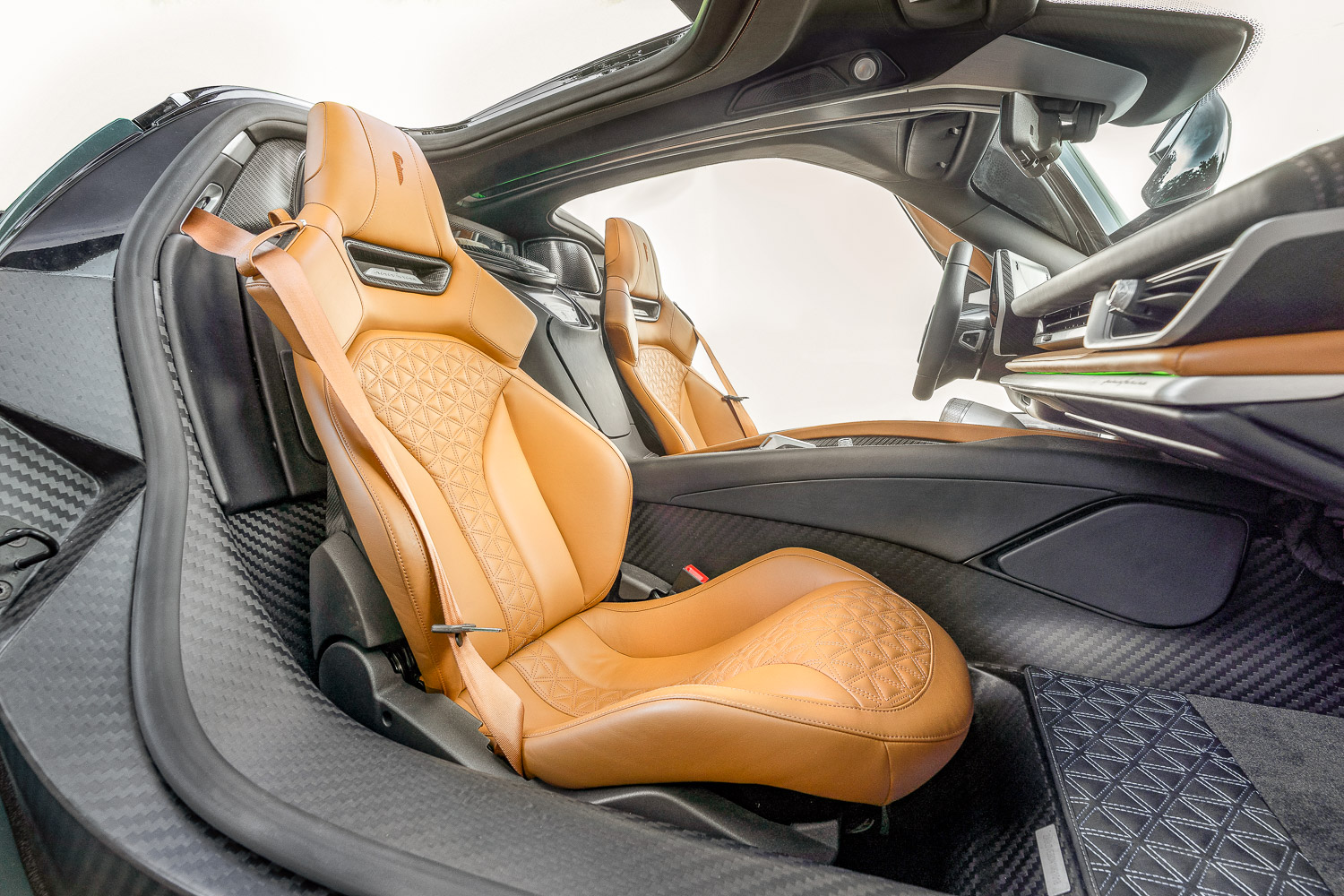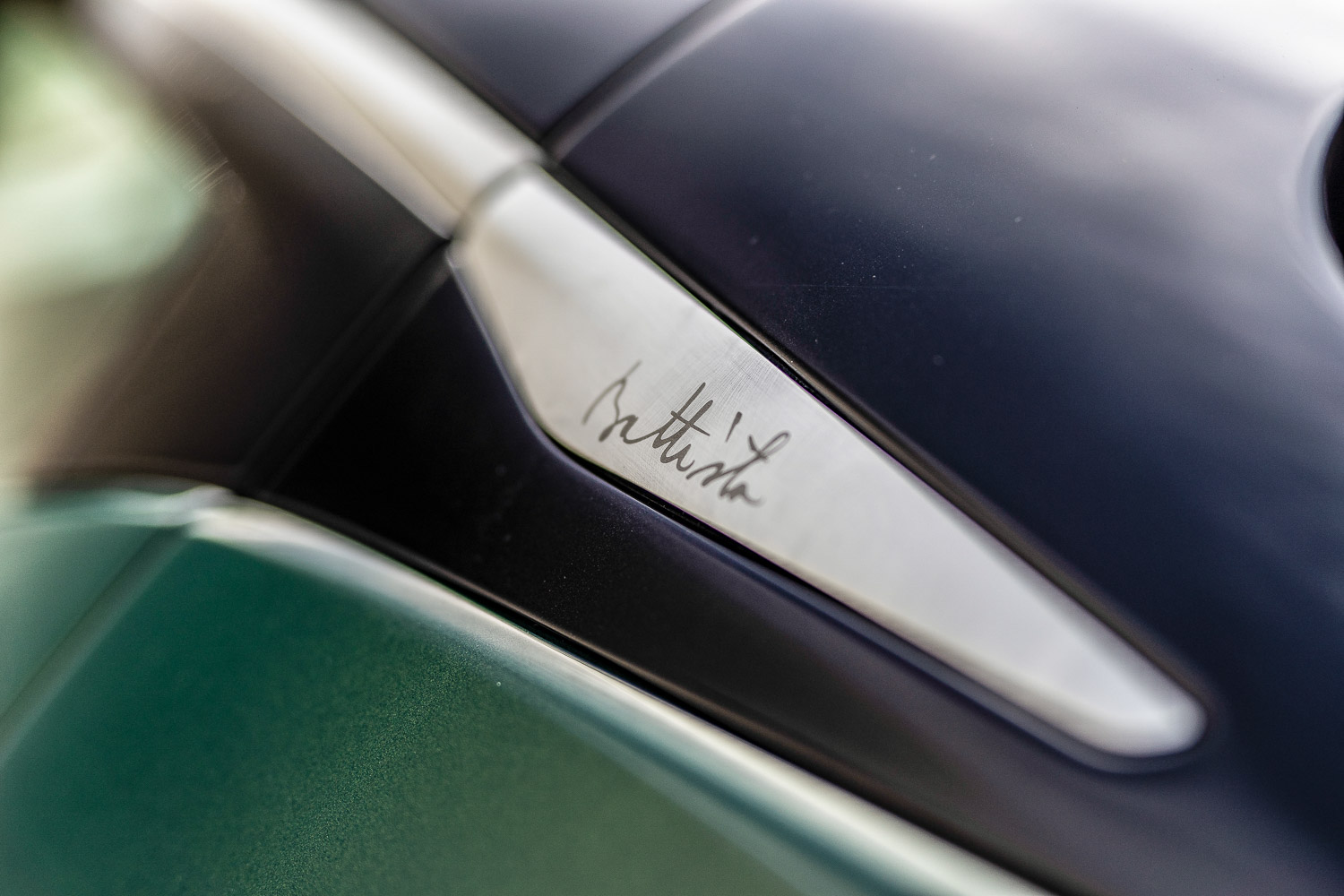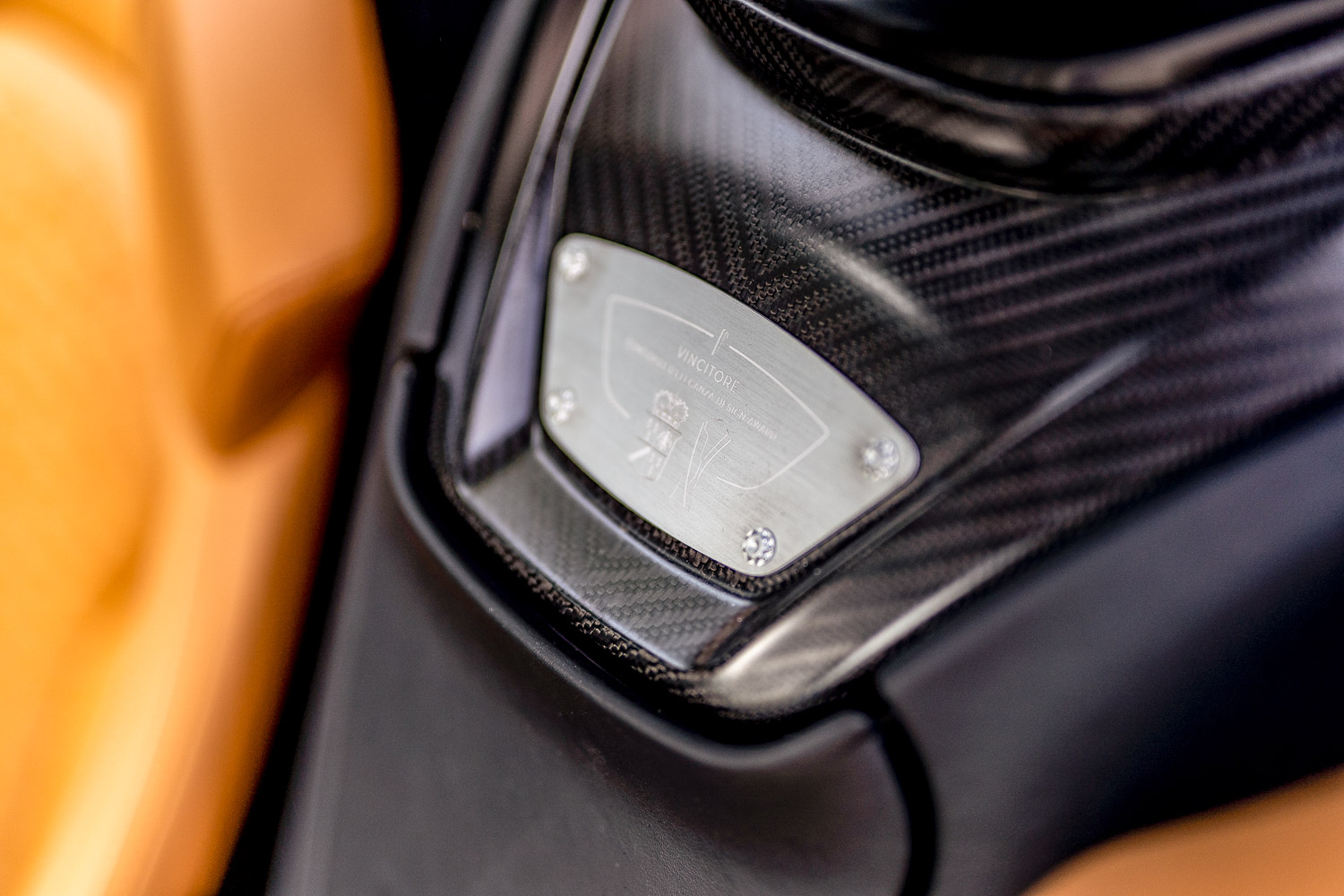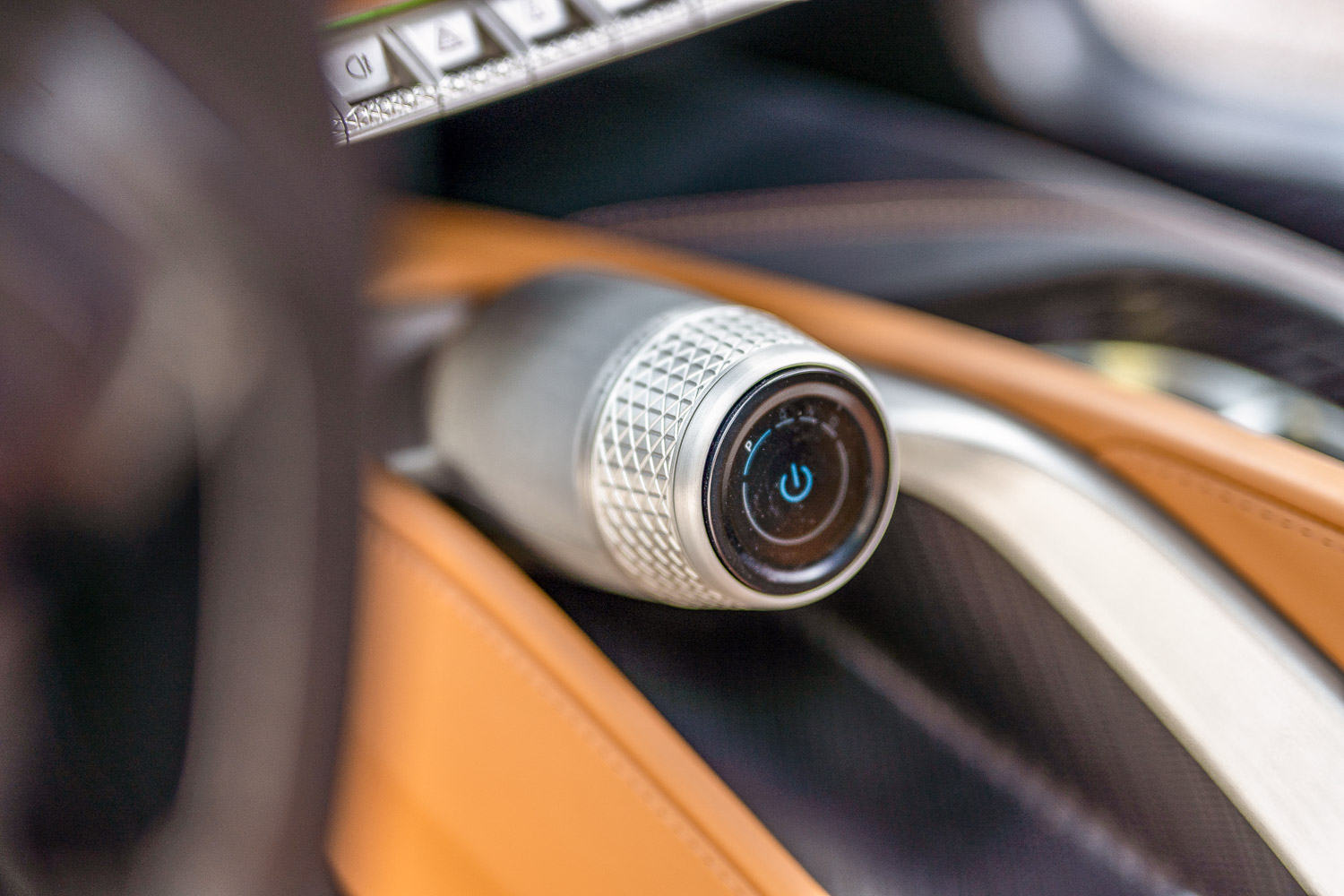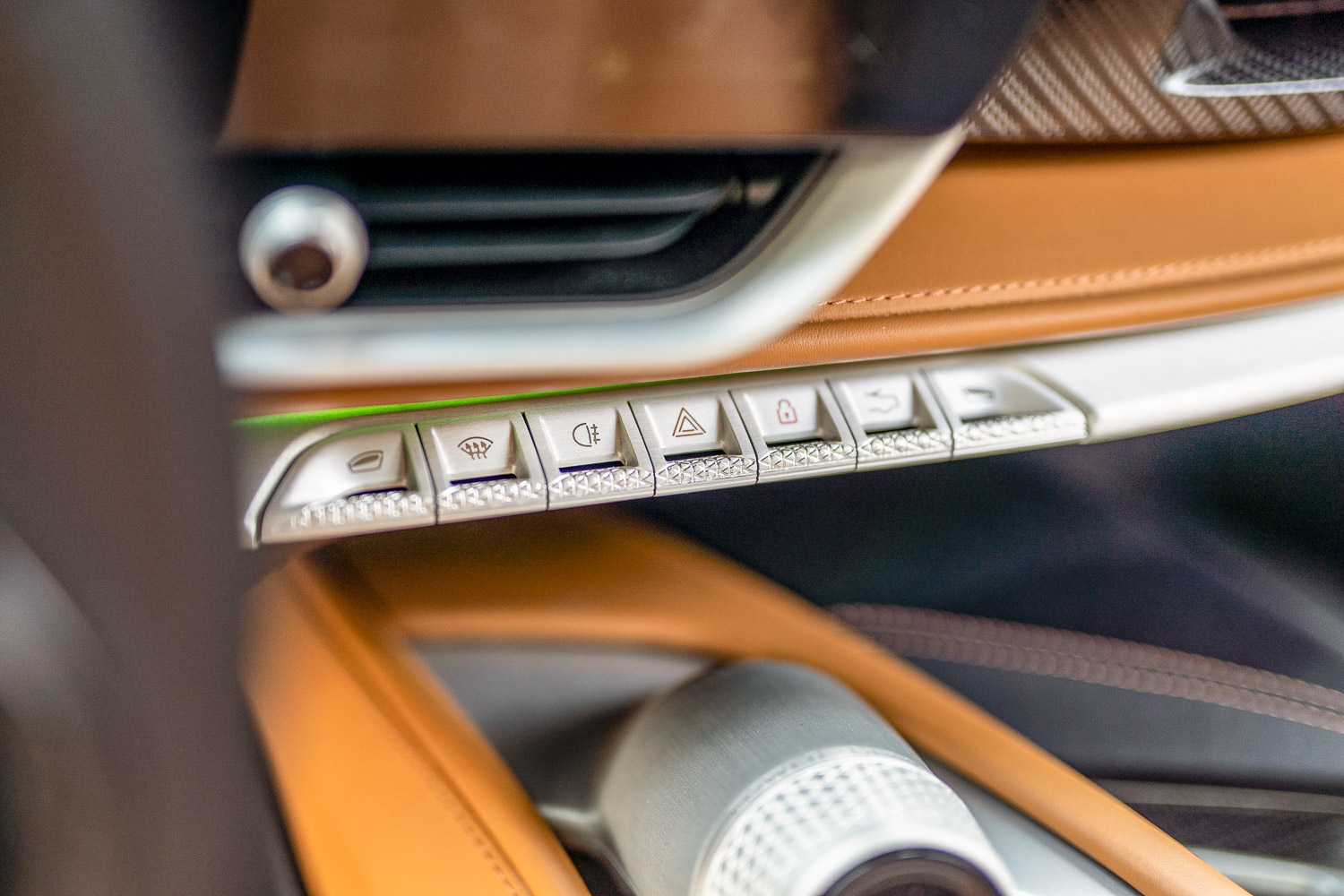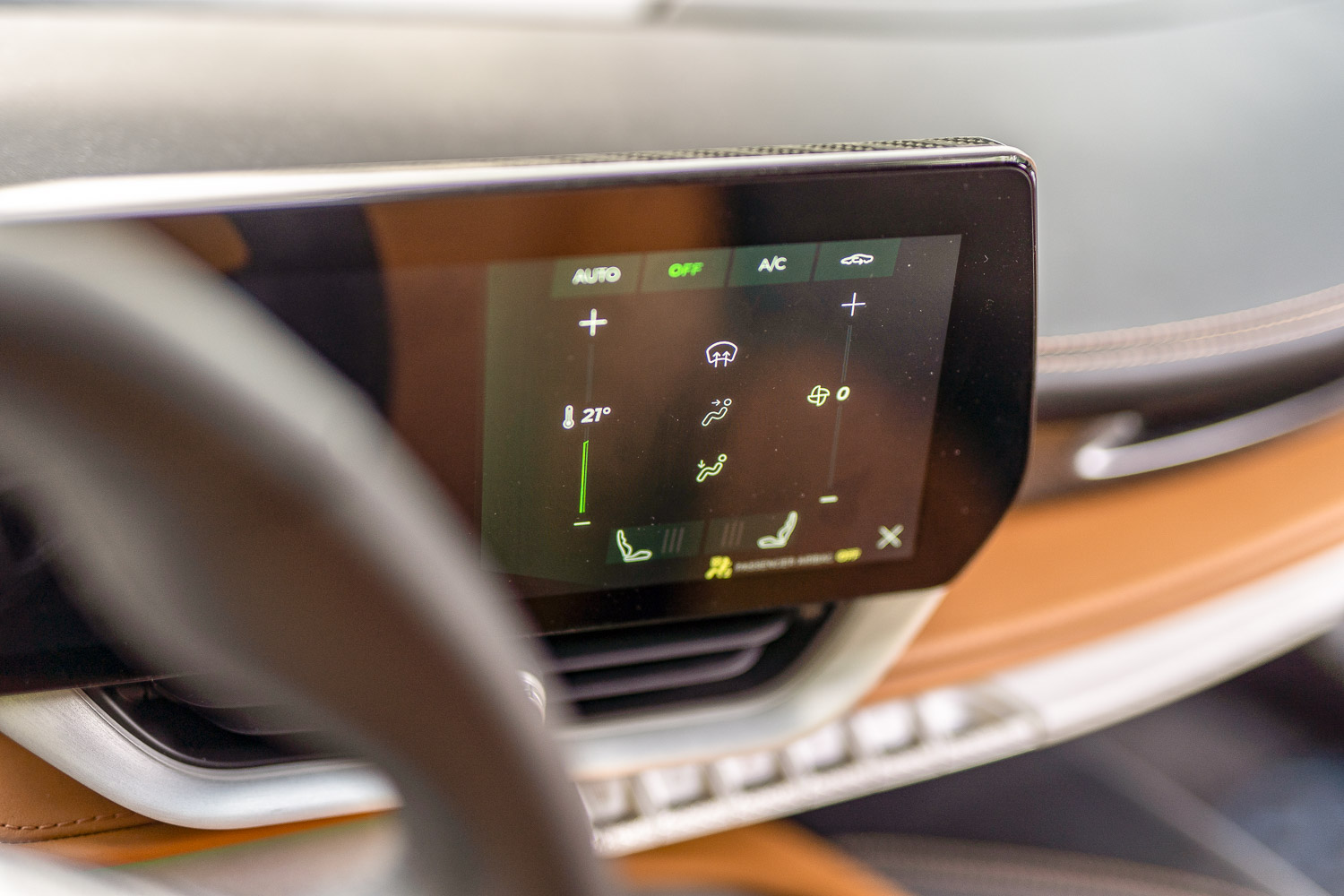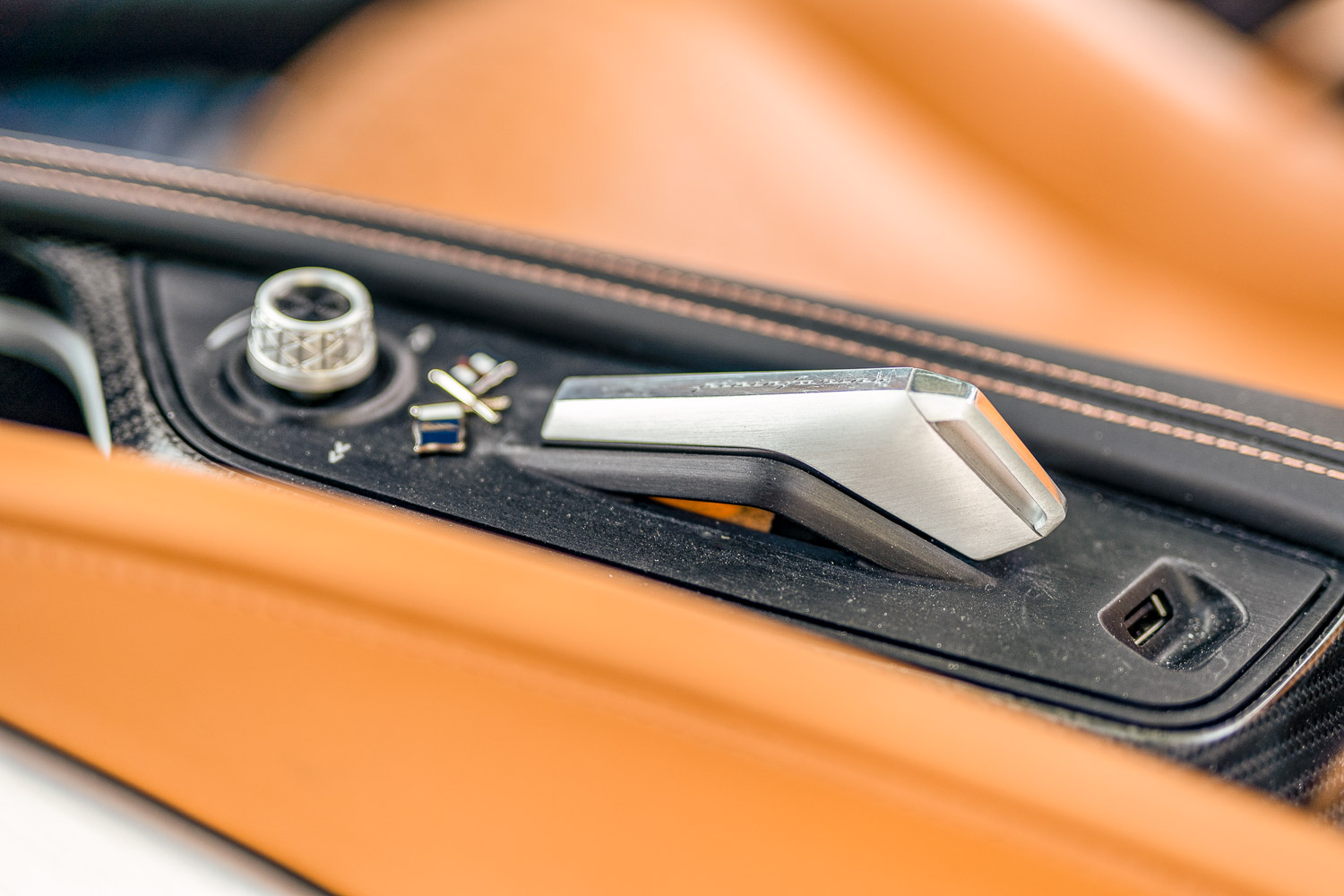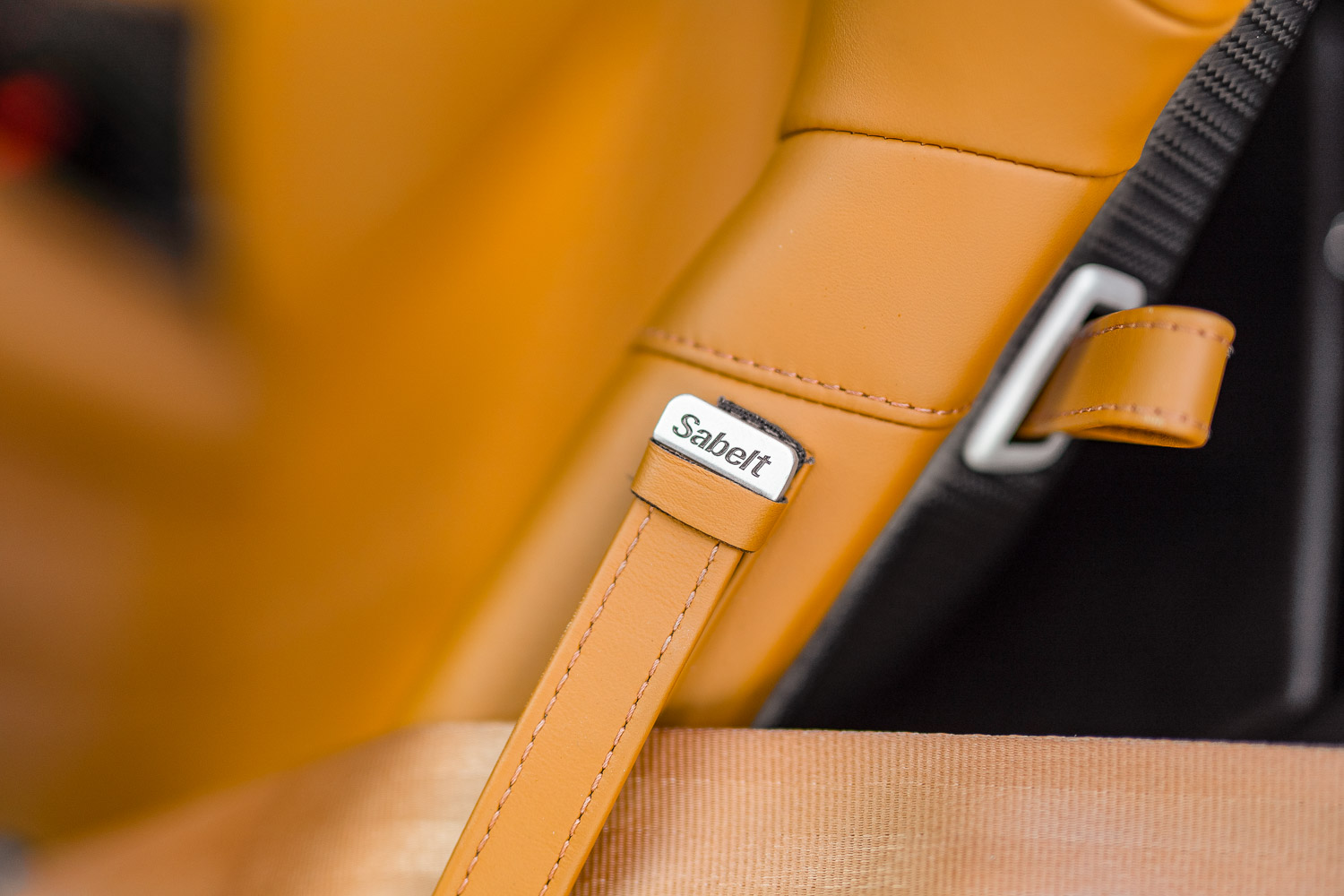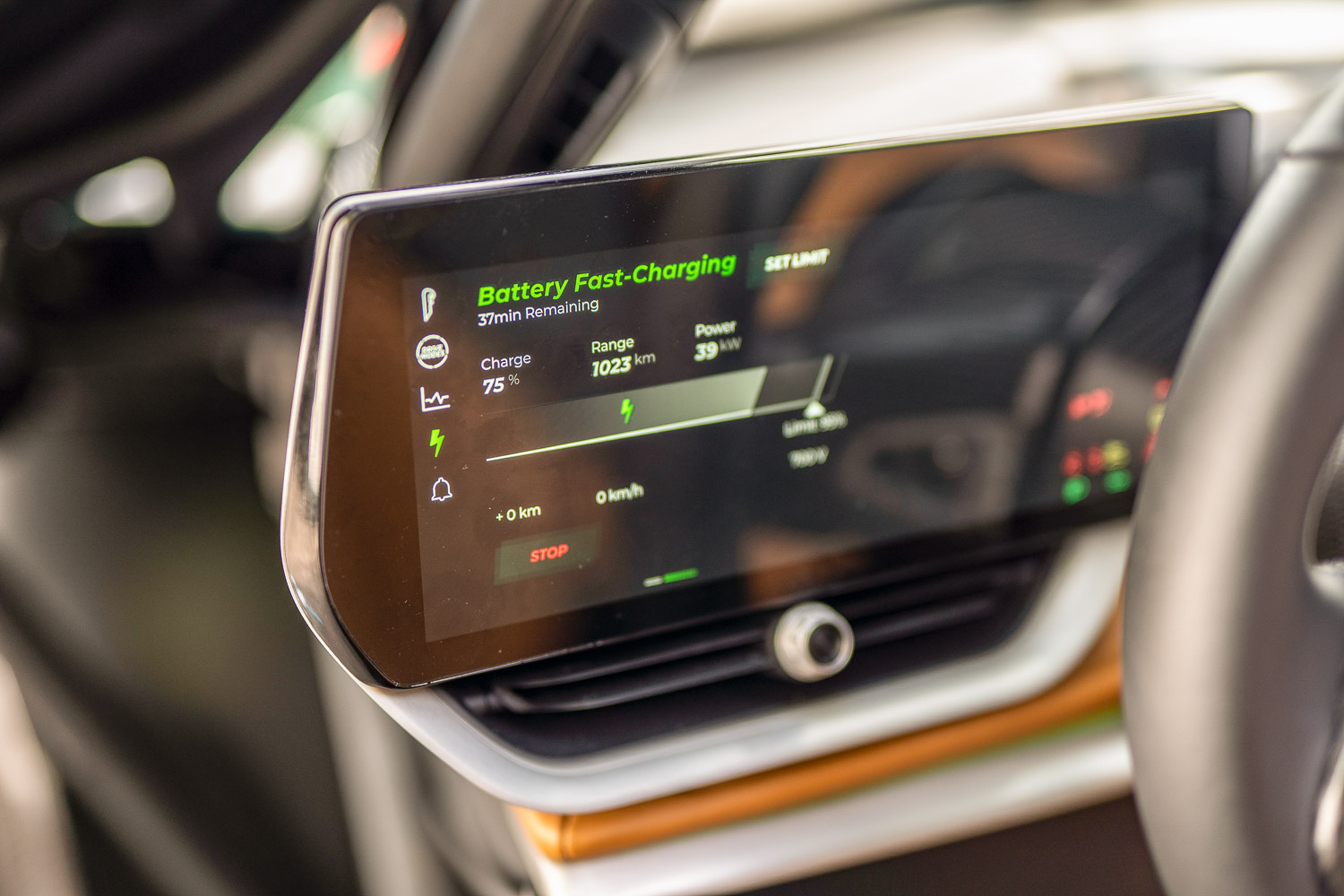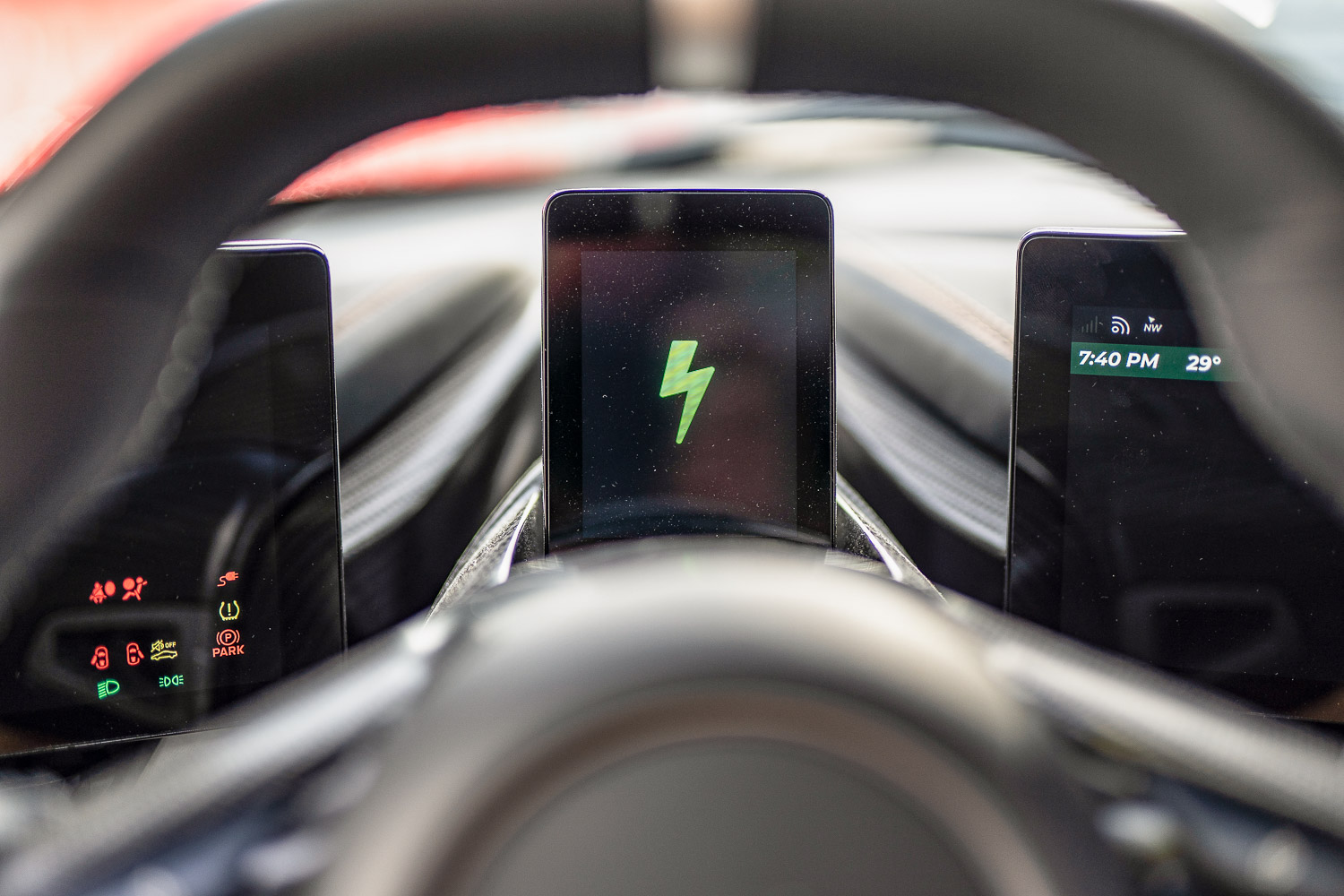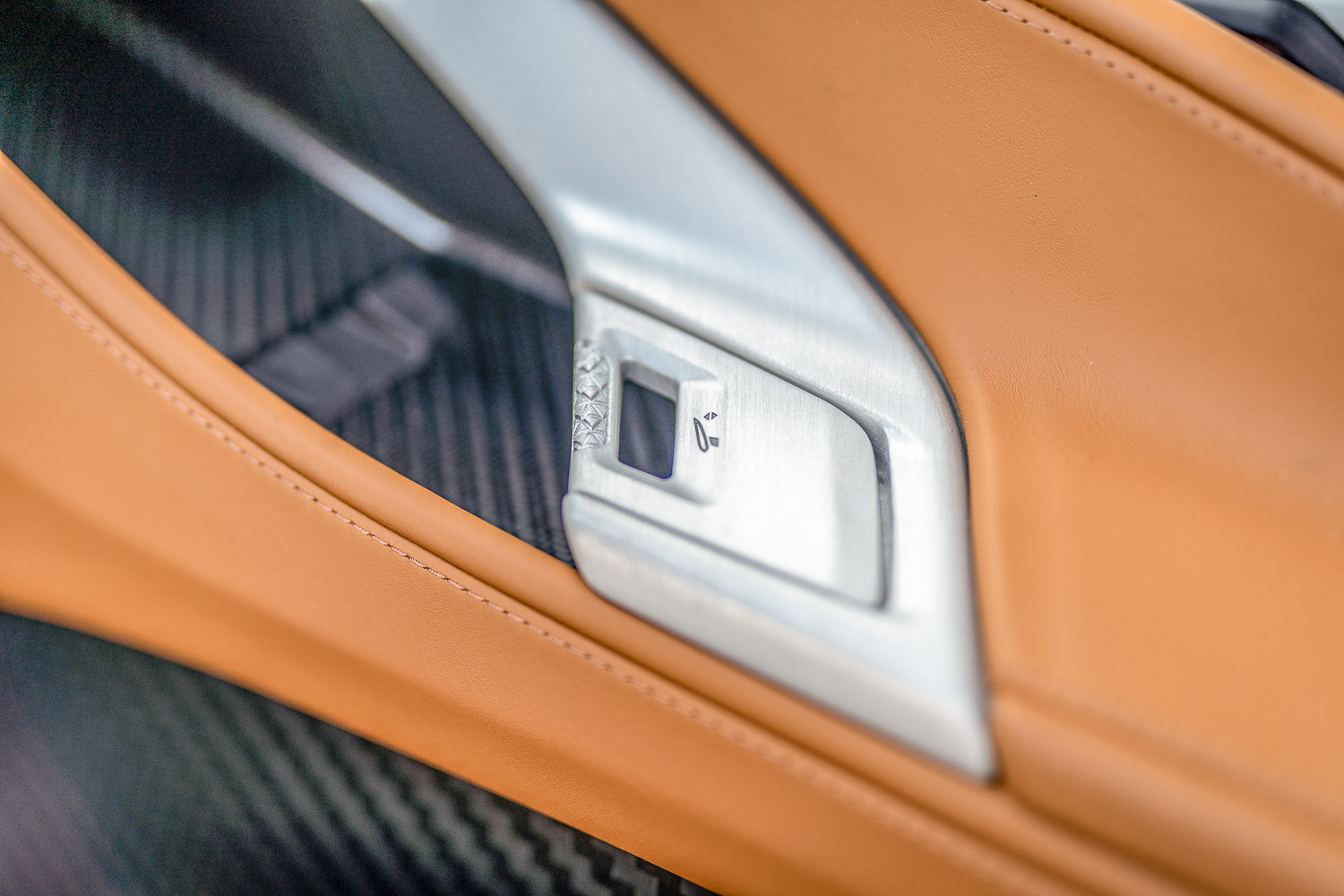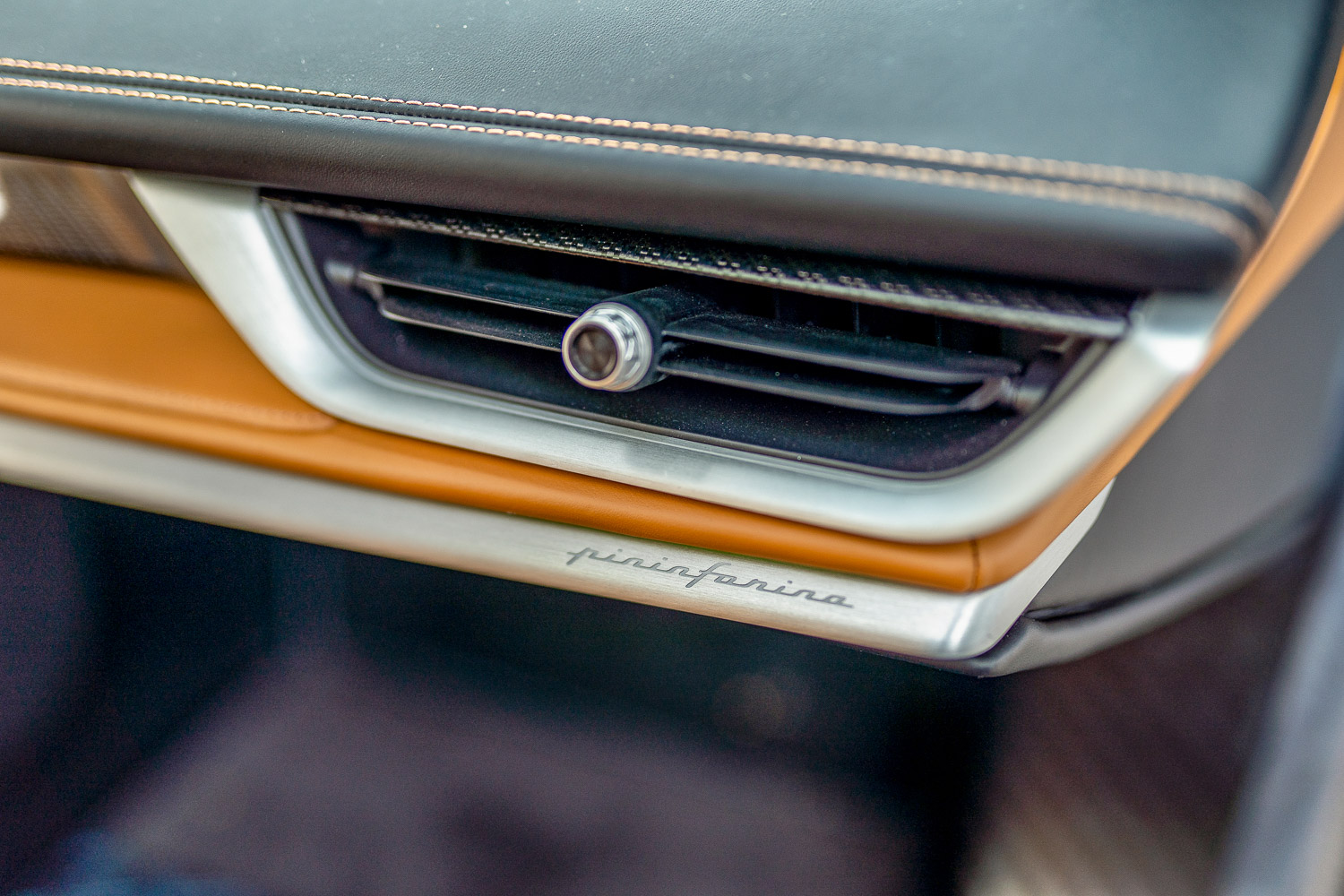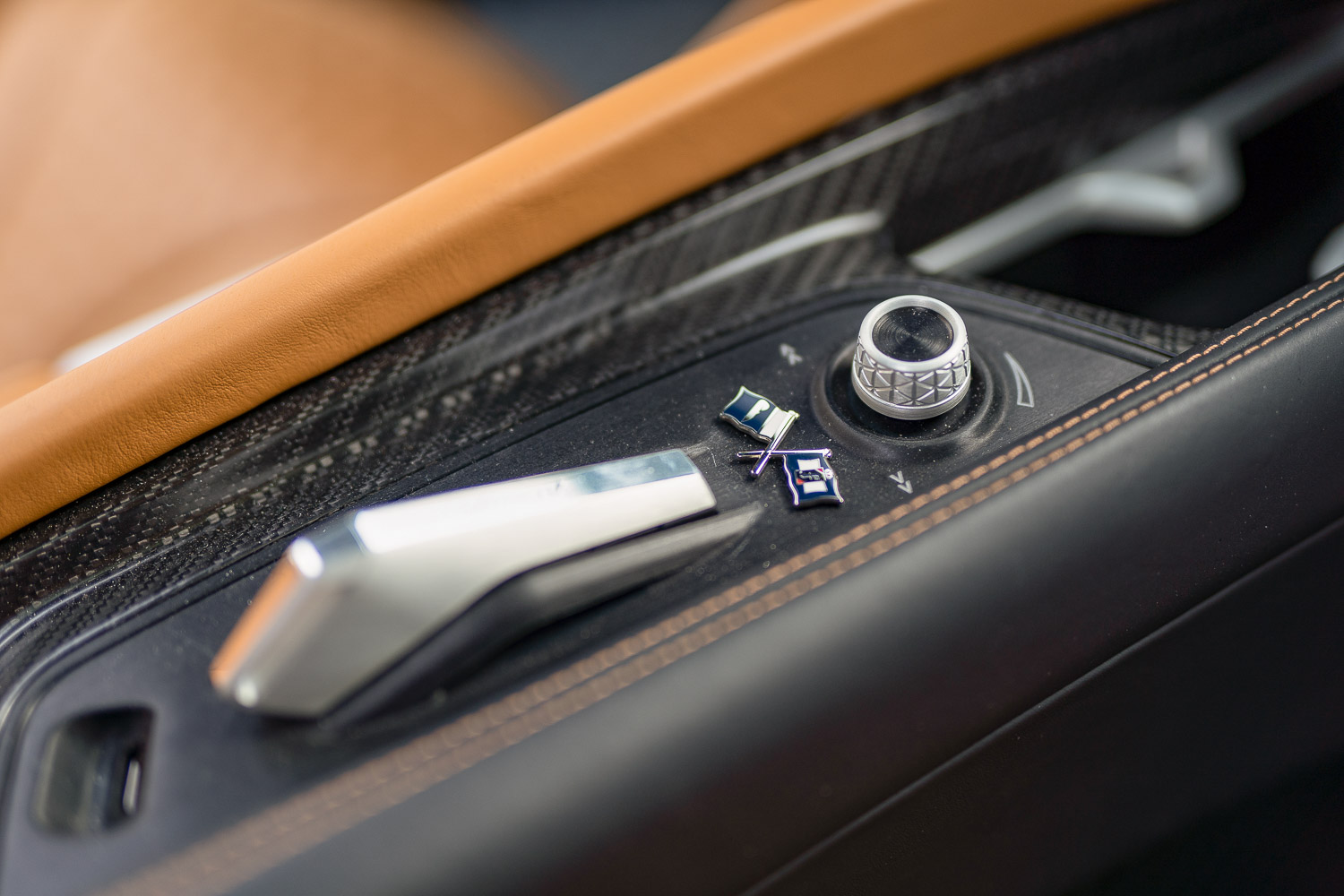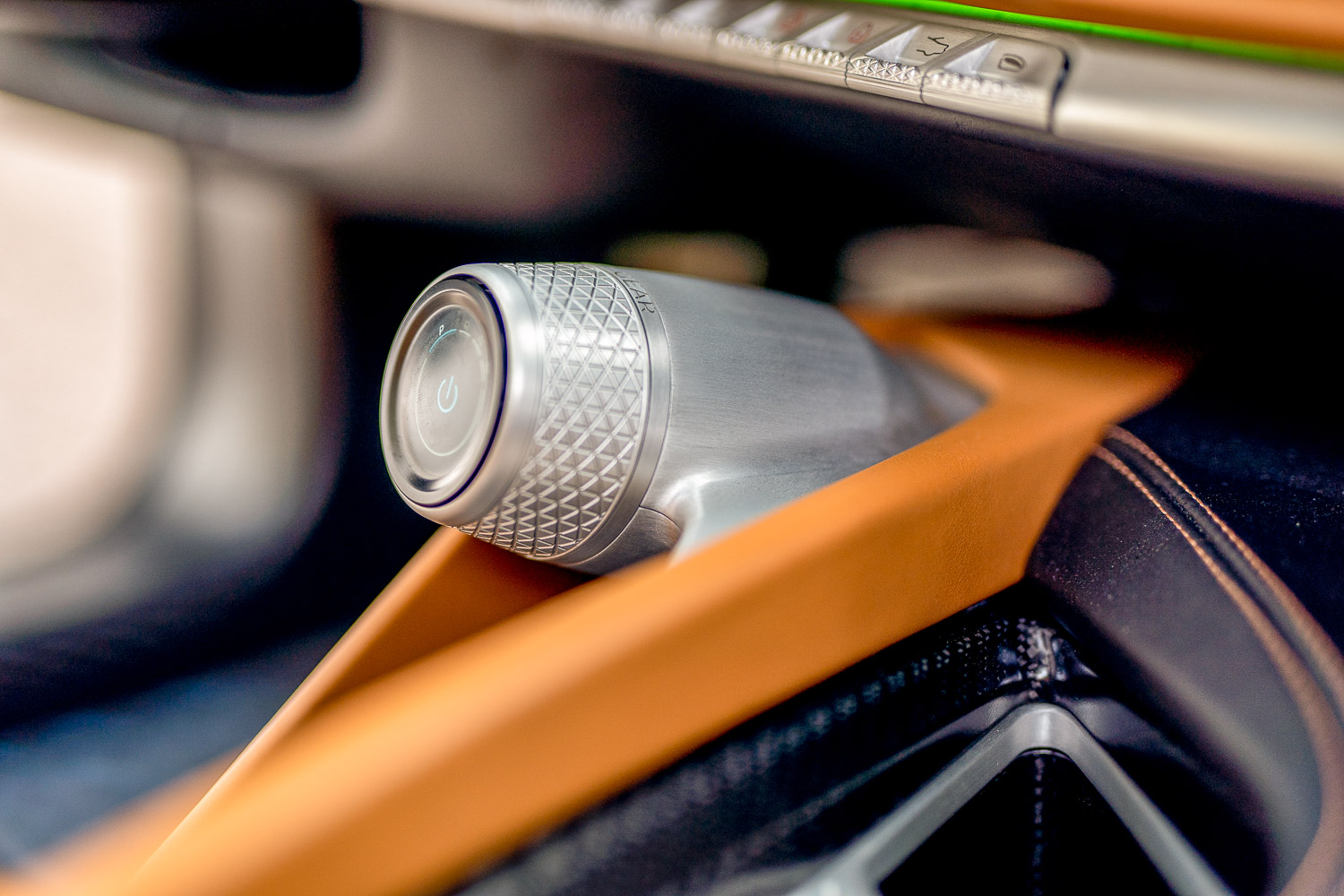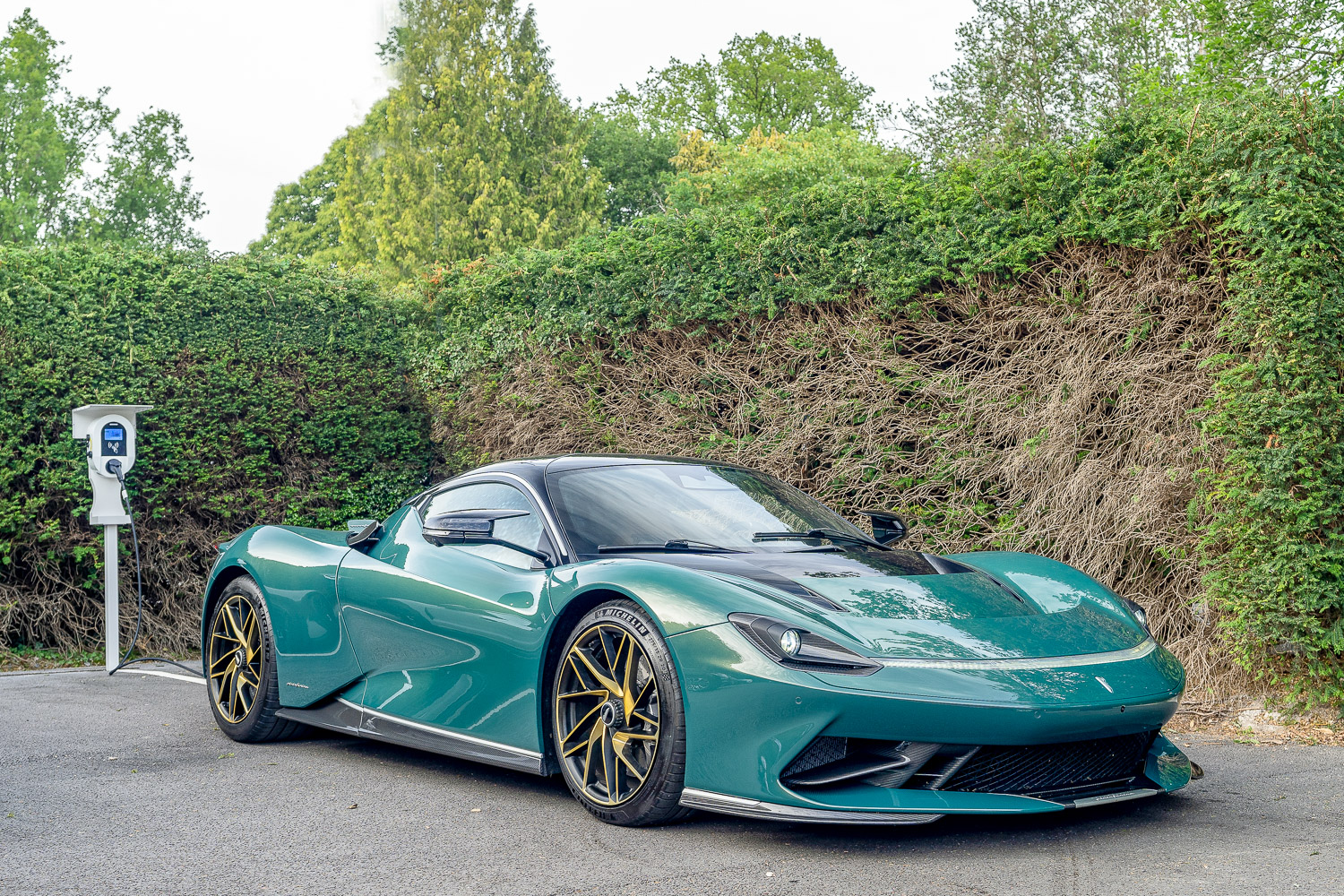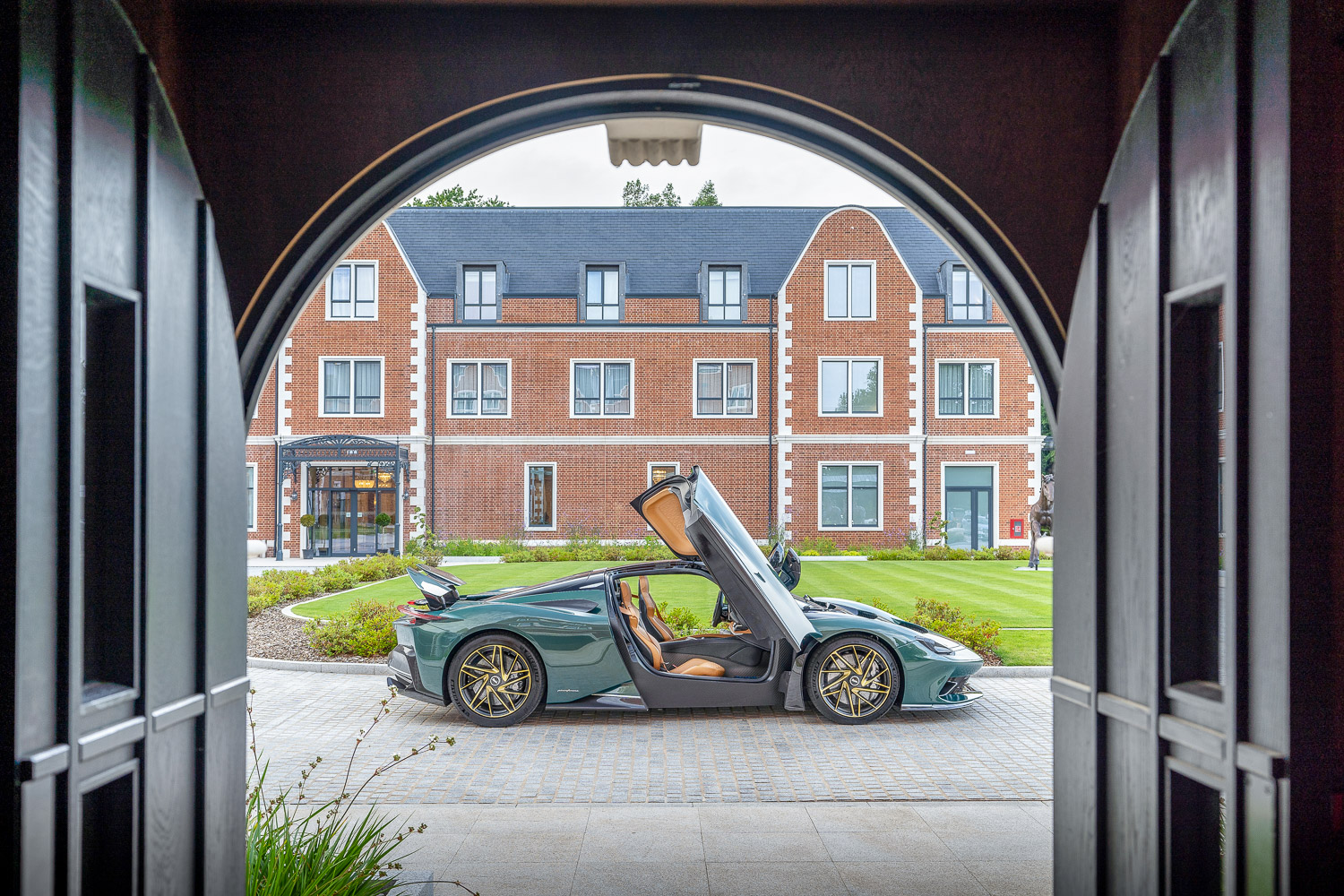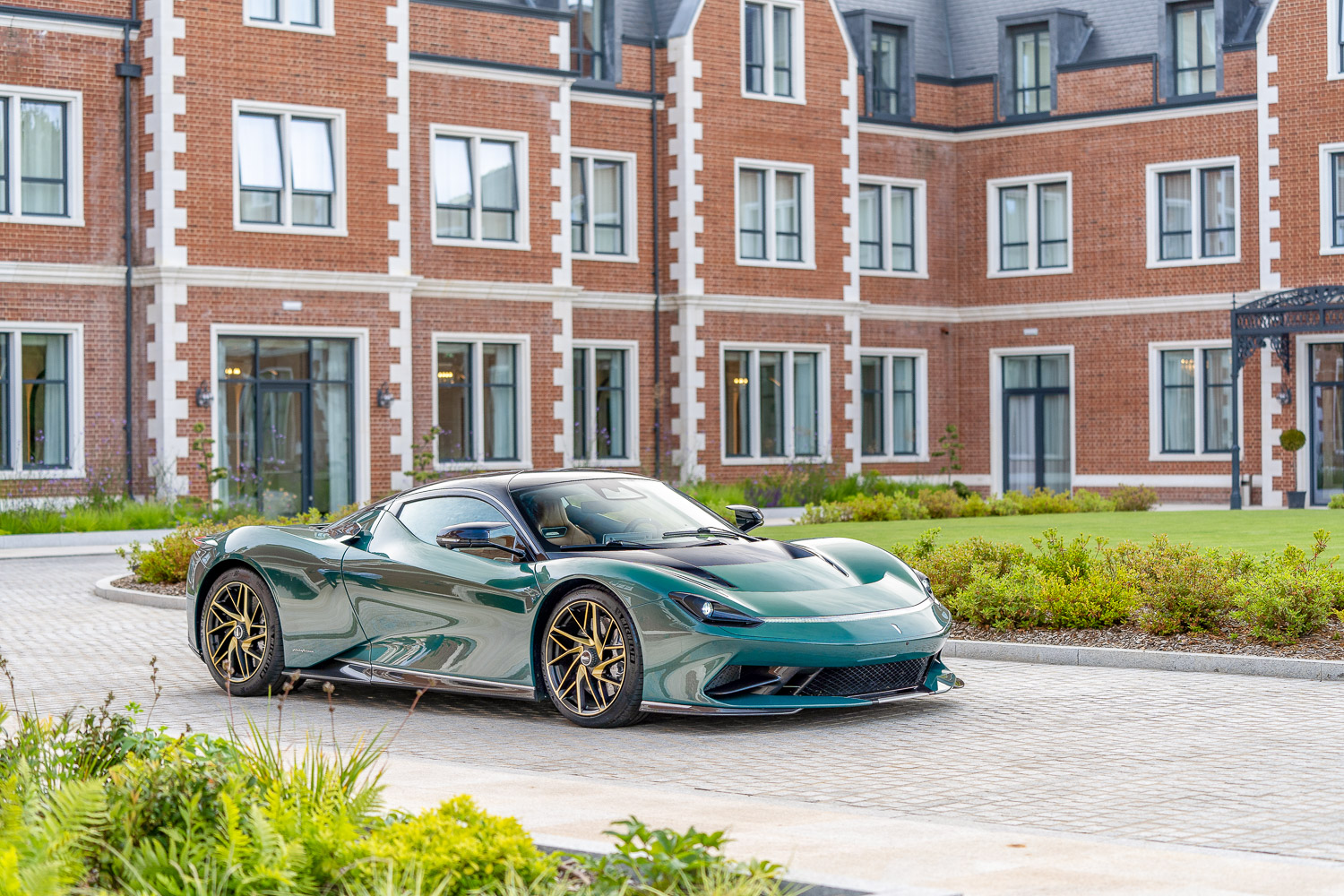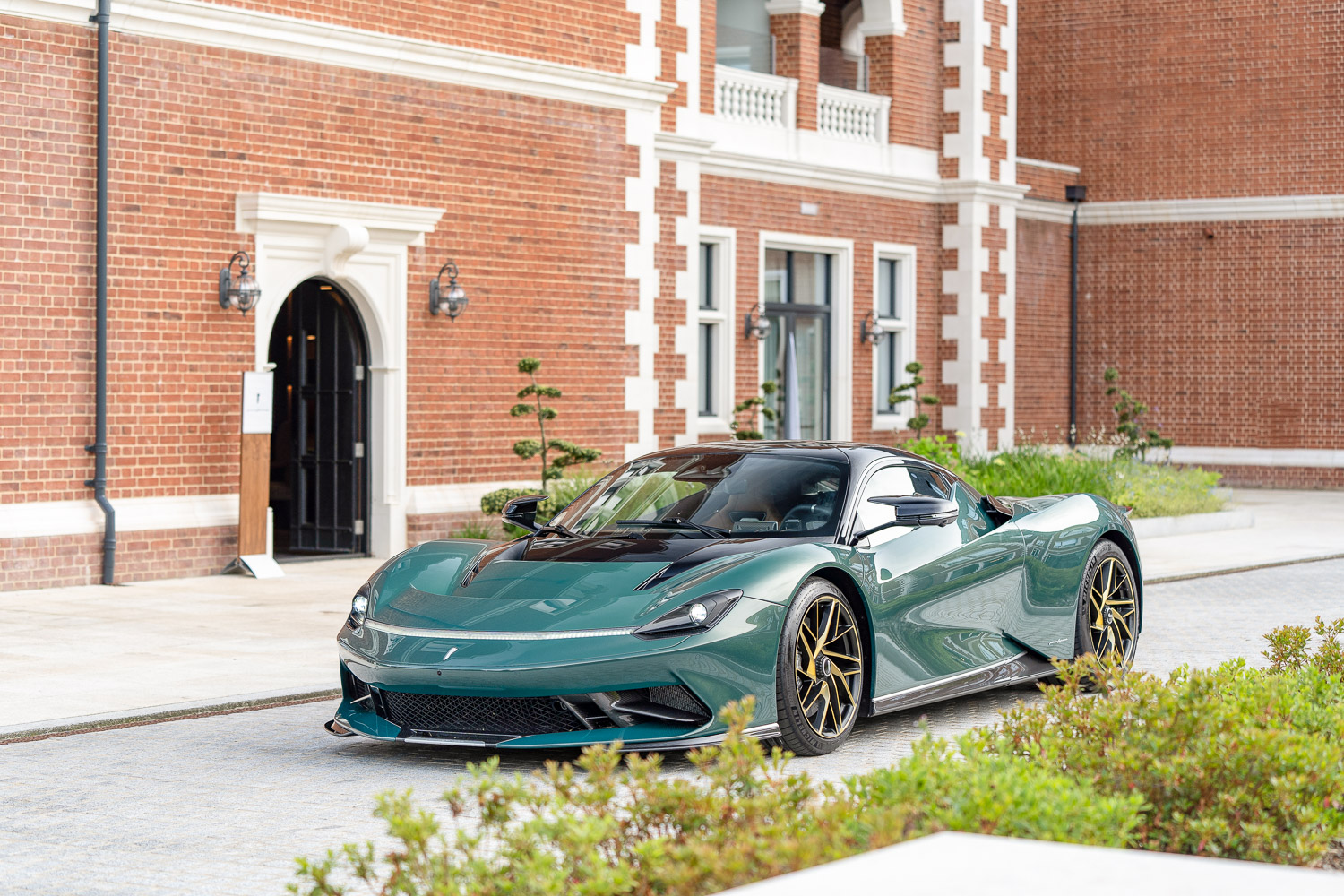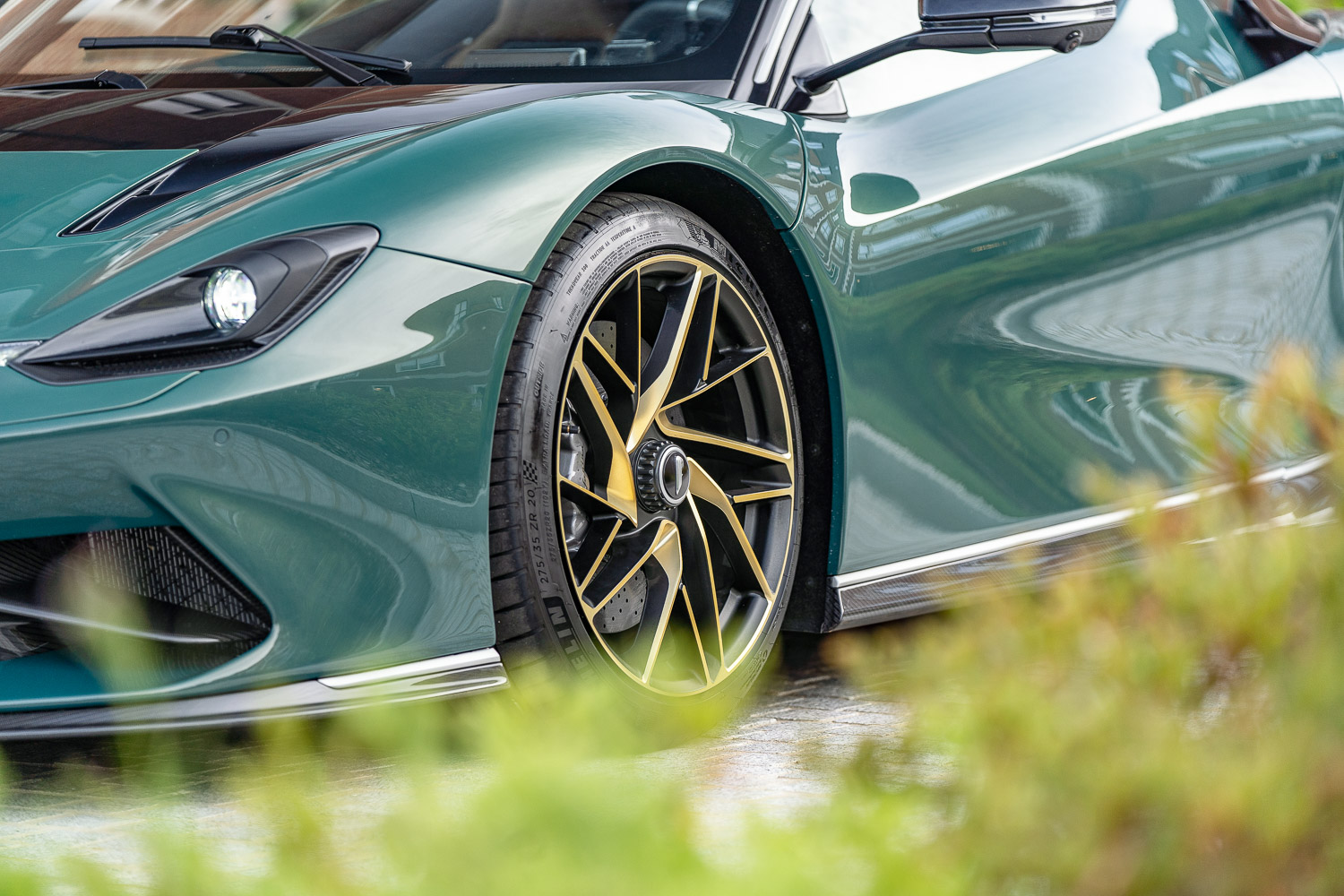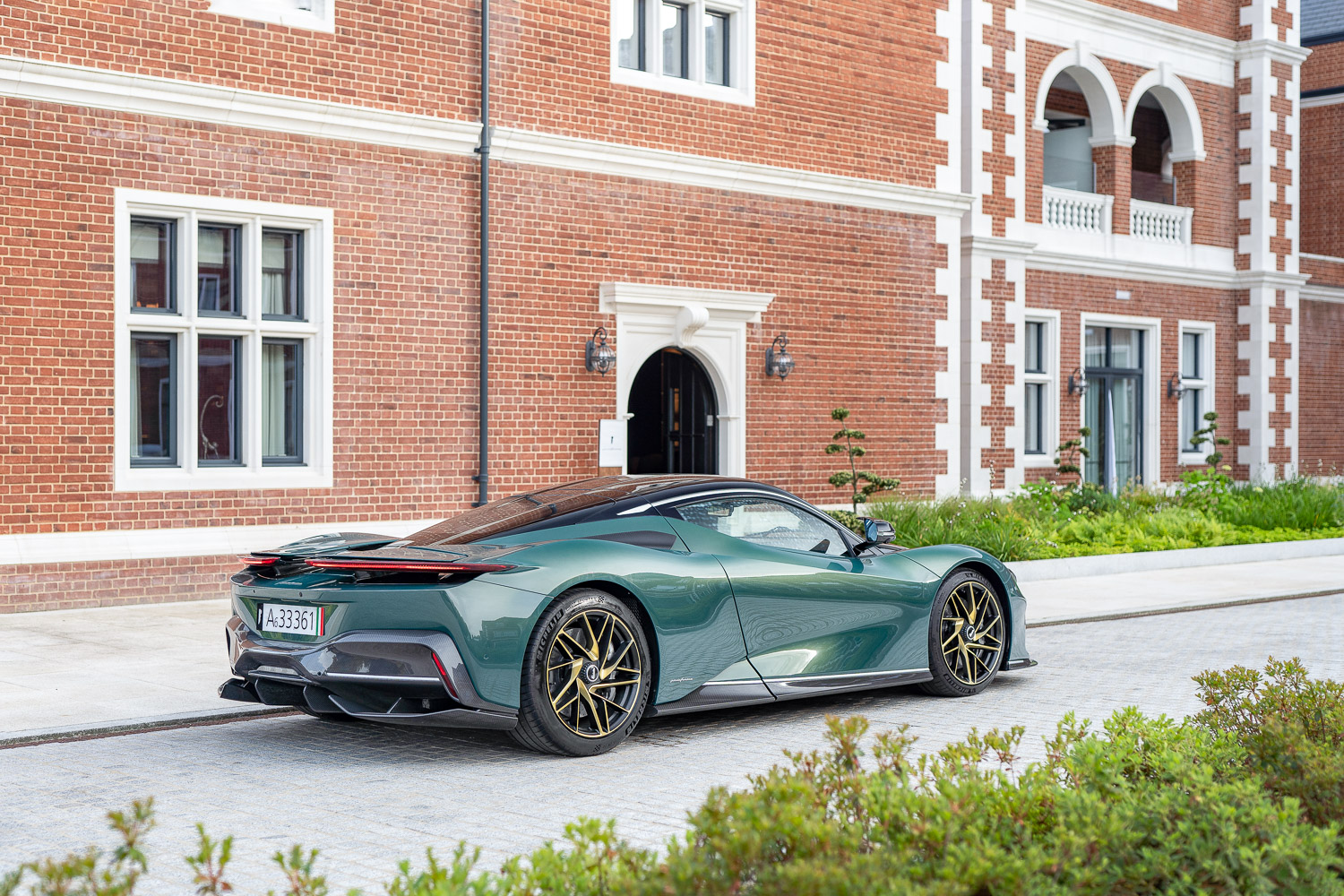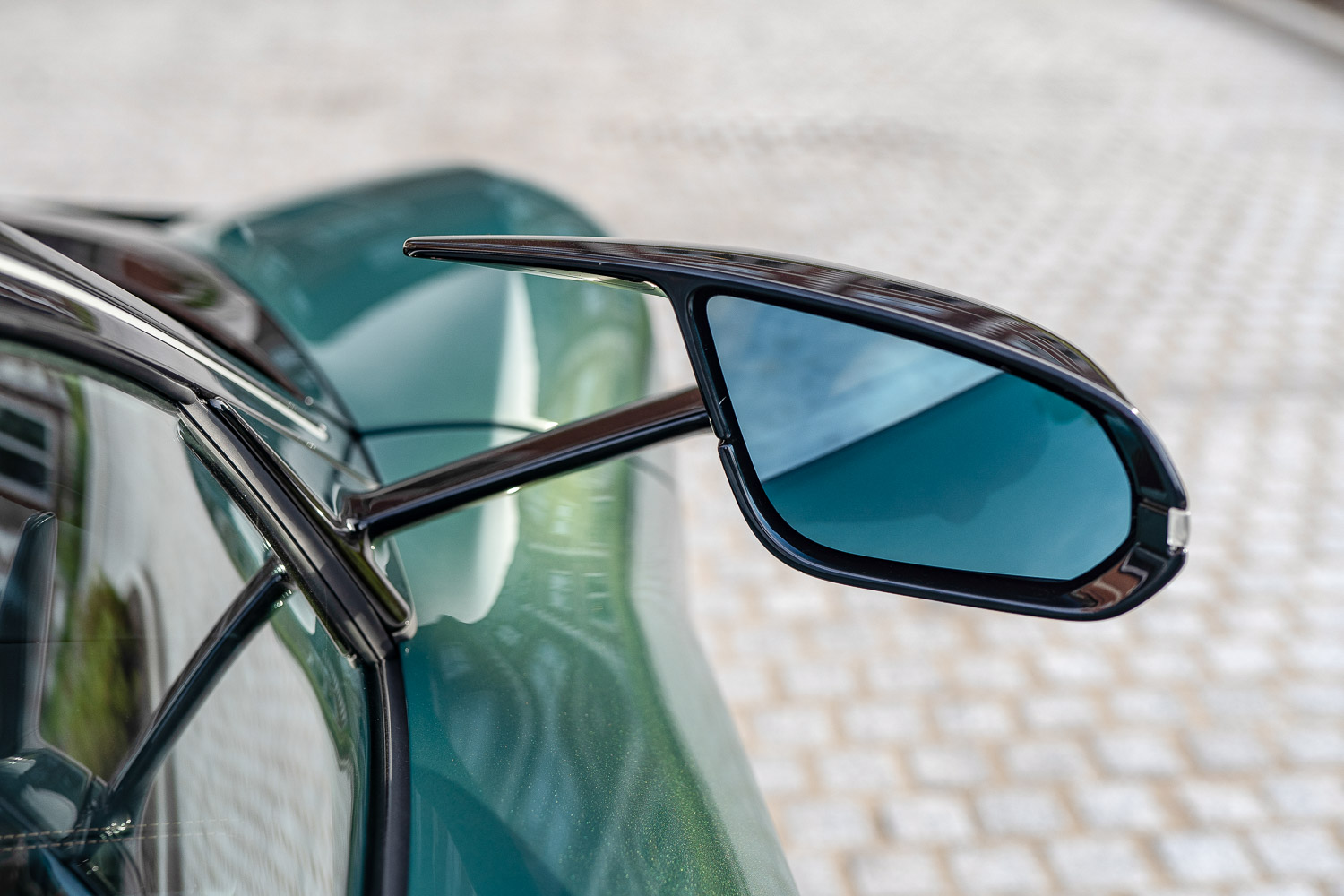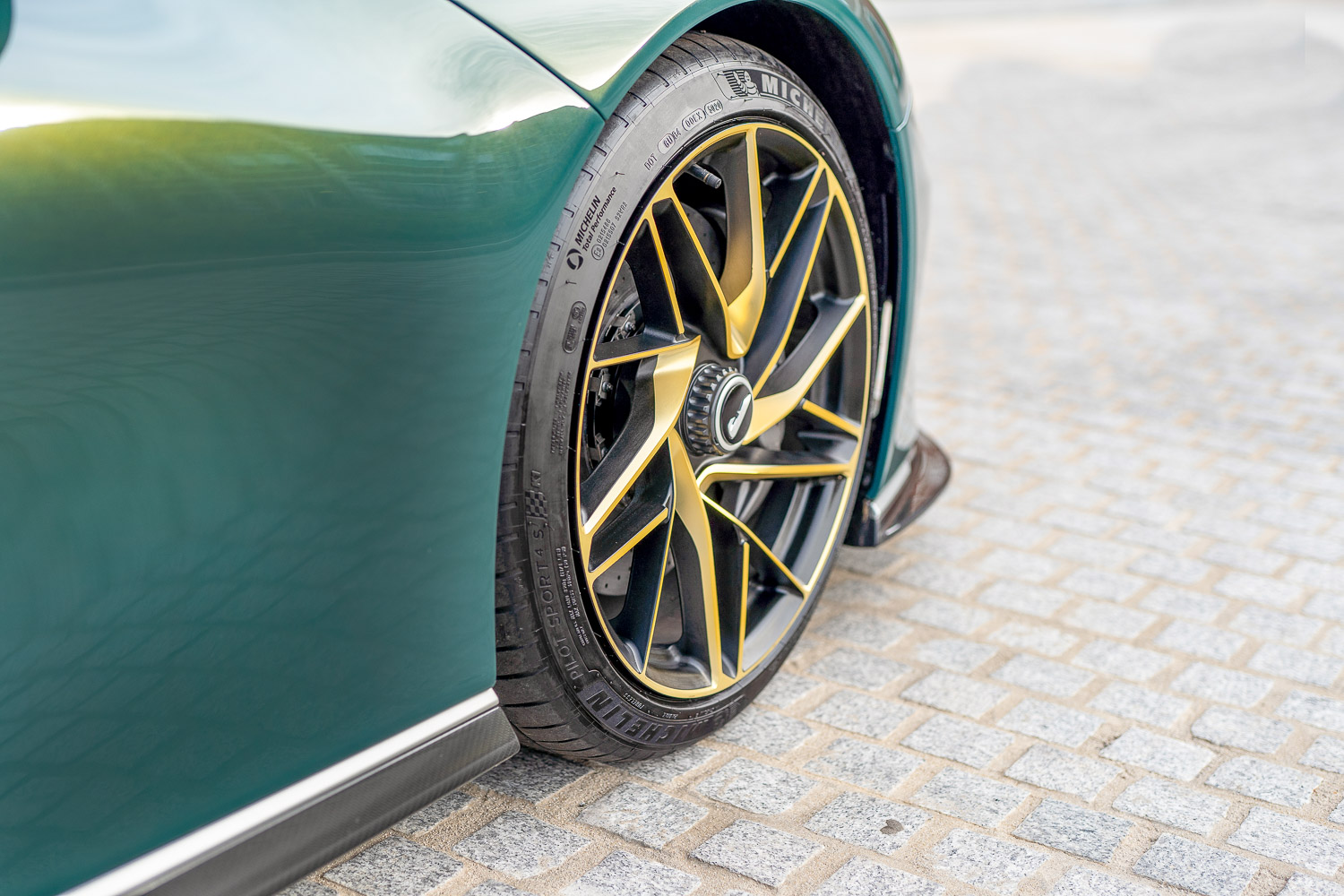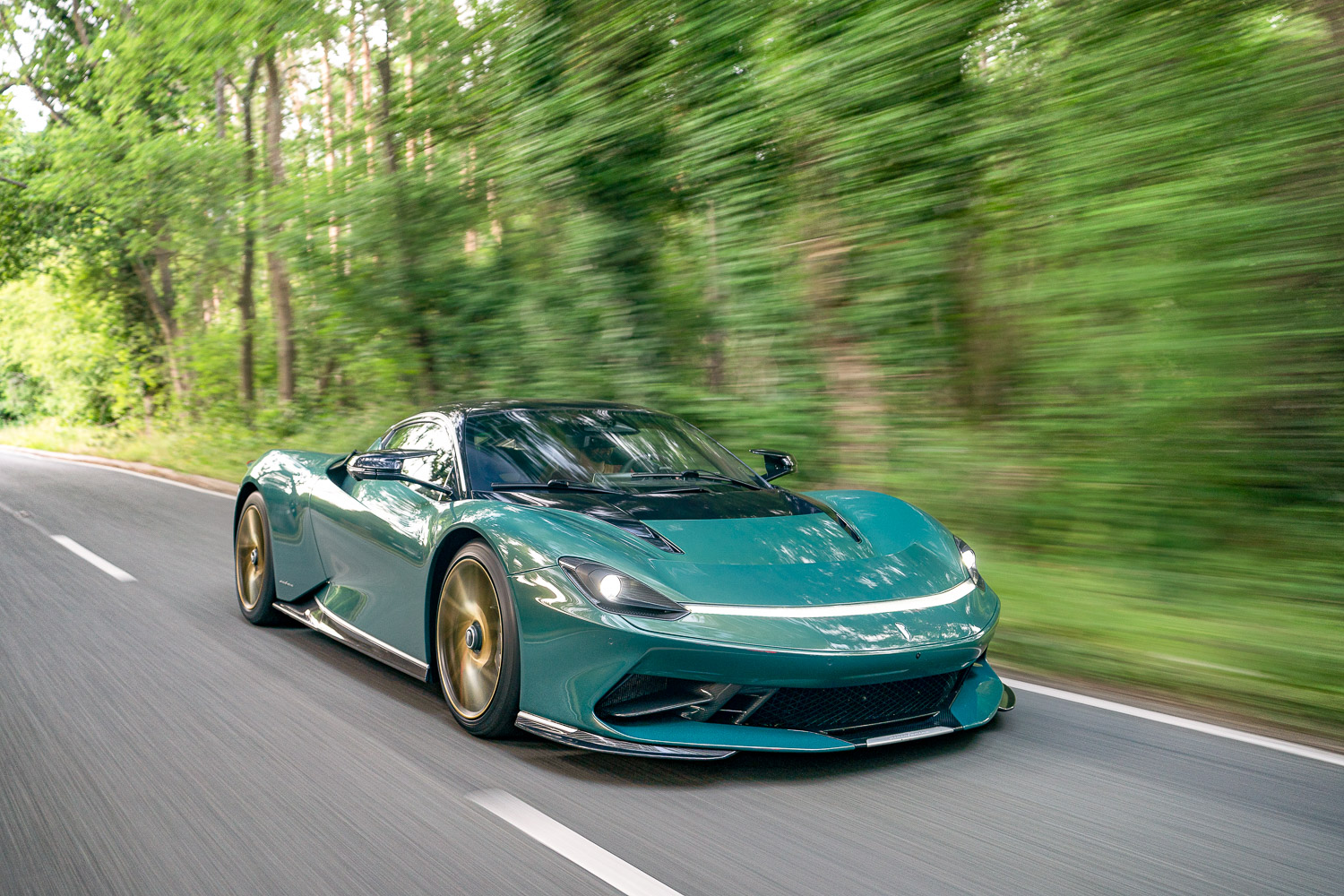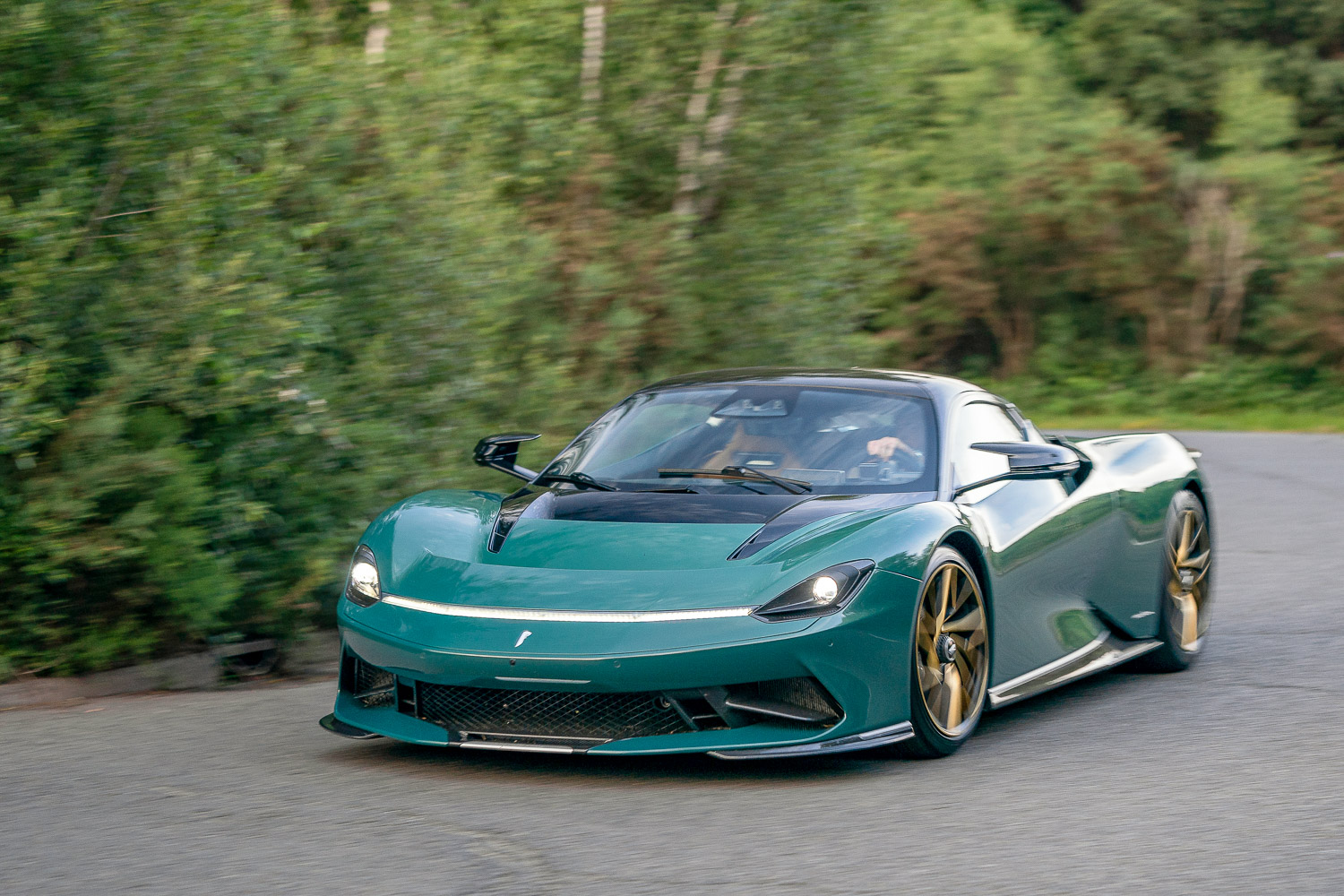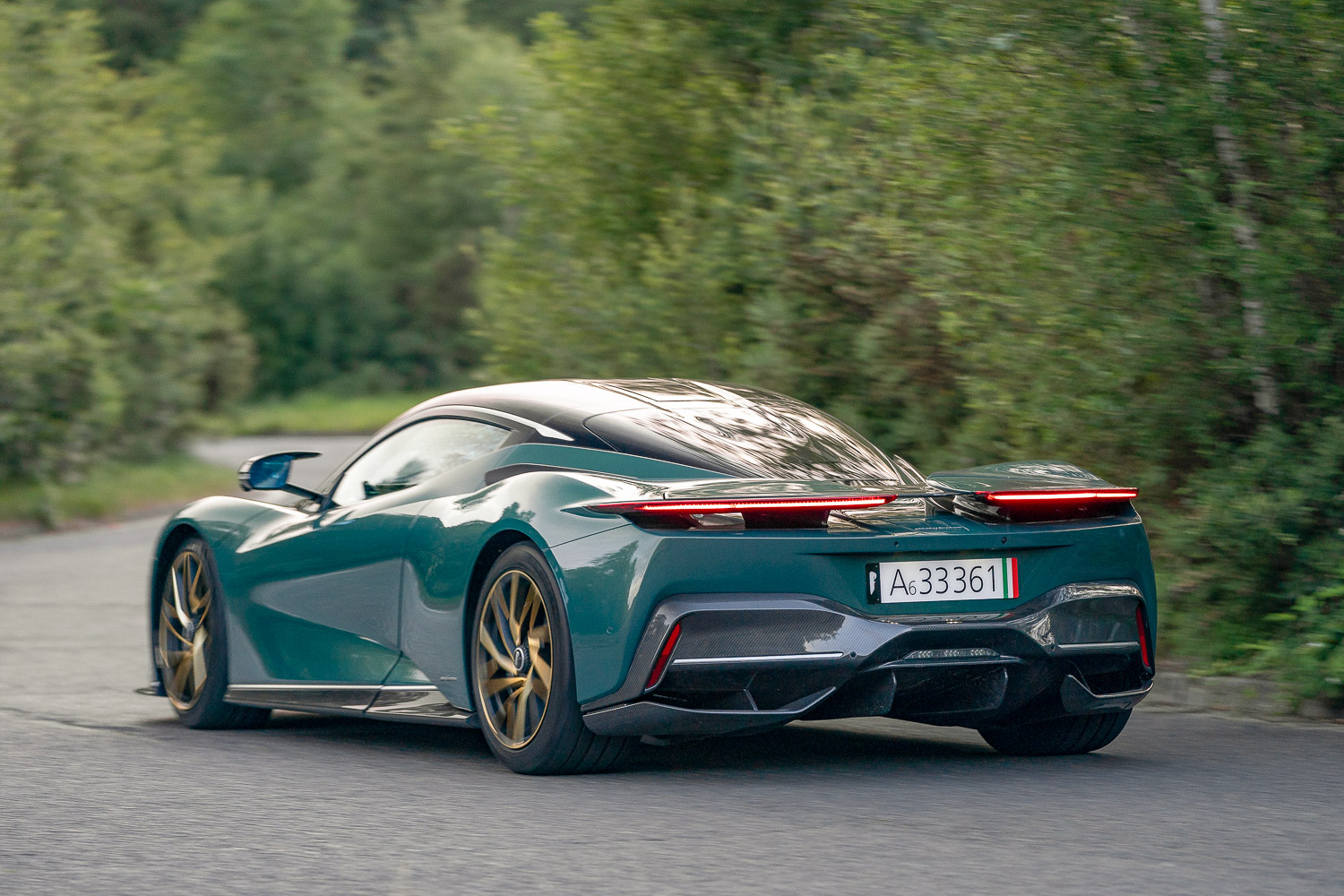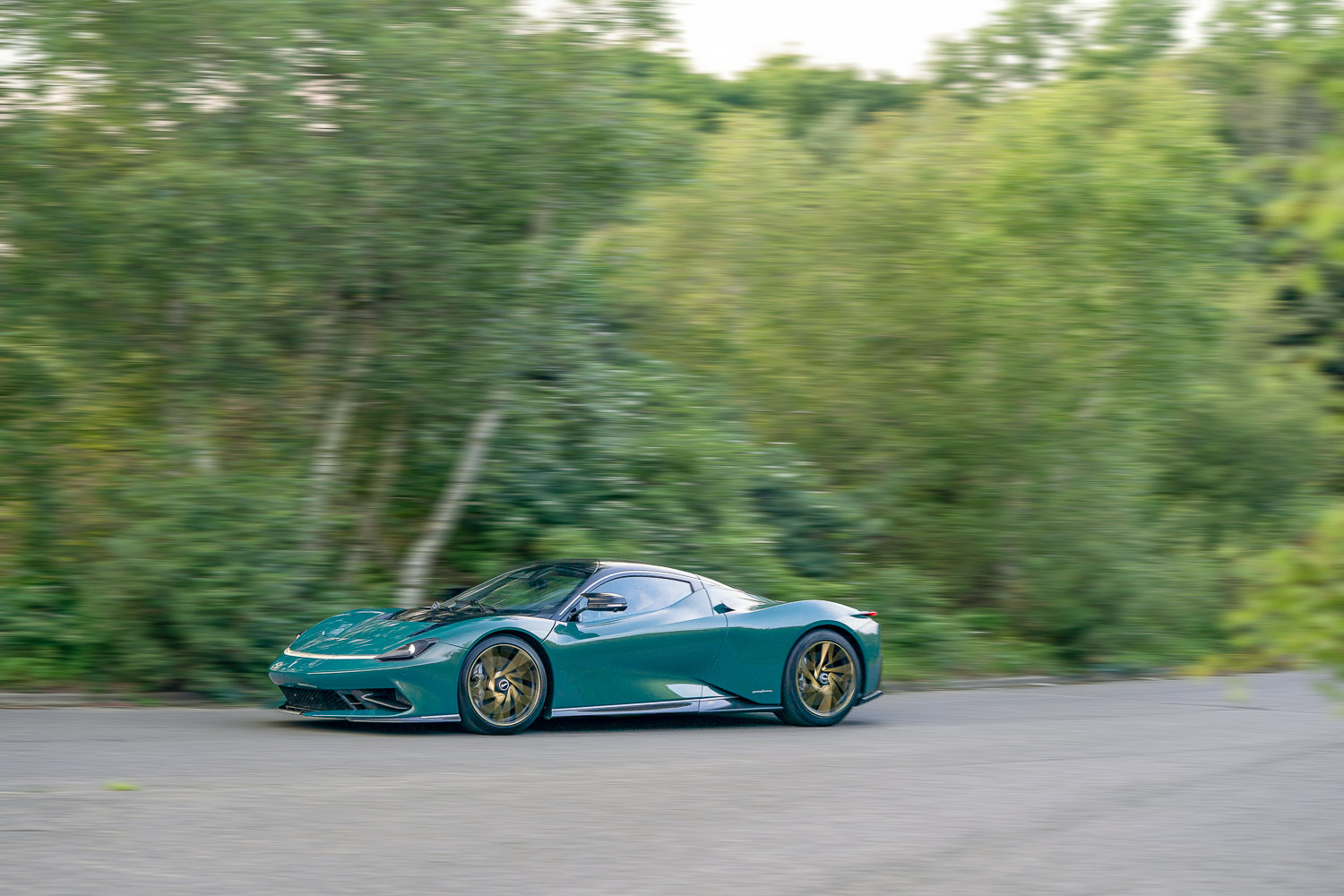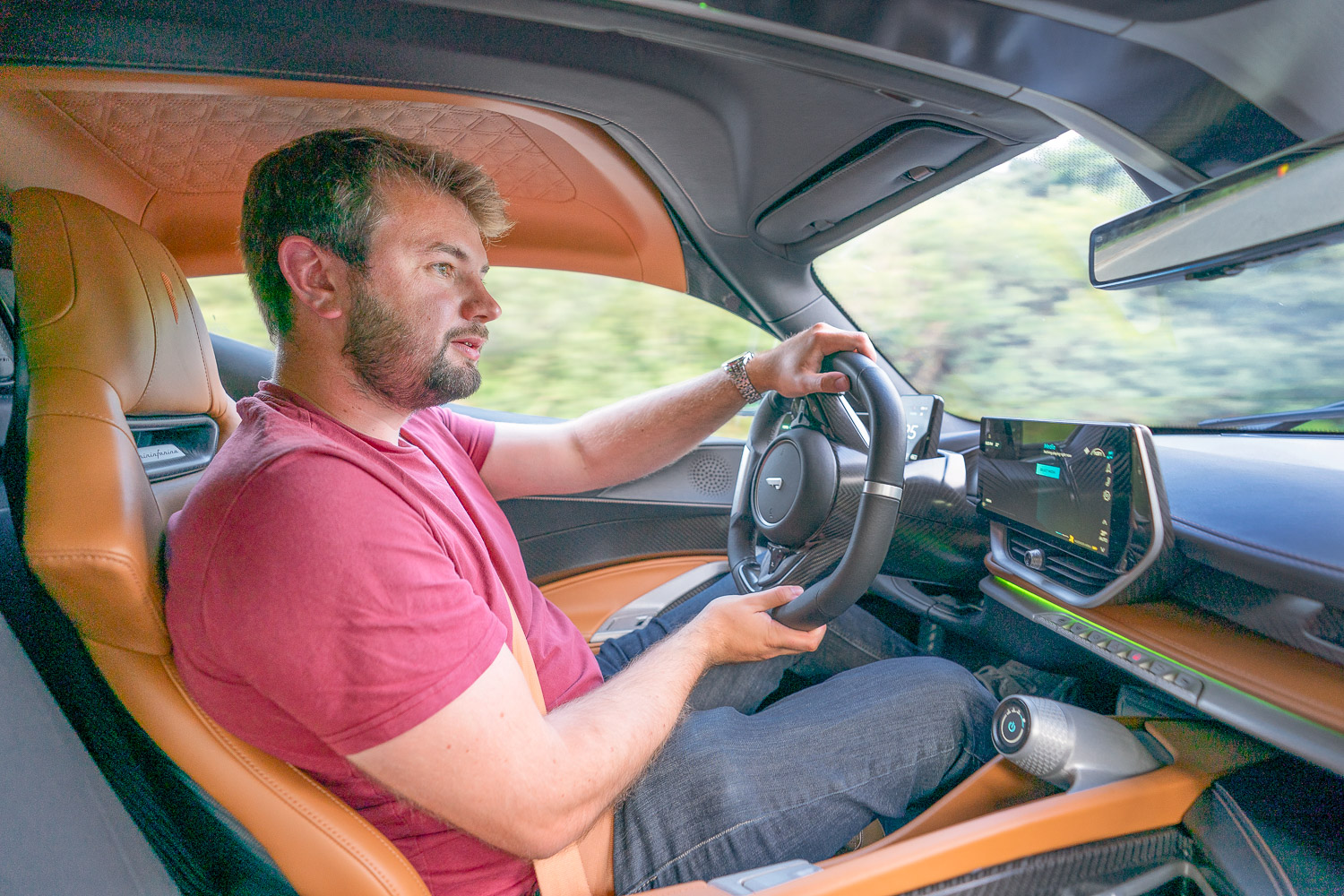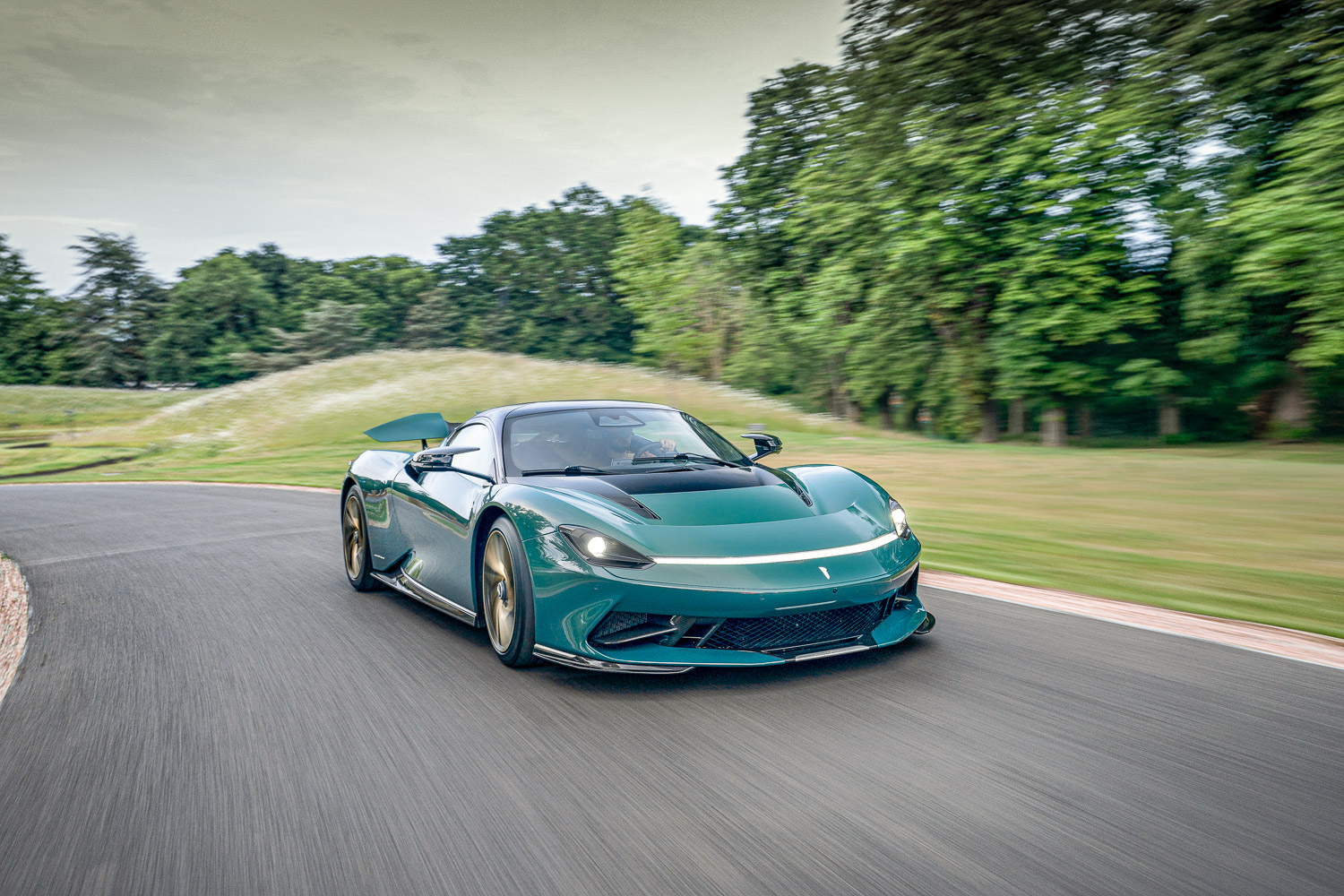The Pininfarina name is legendary among car enthusiasts, and the Italian coachbuilder has decided to capitalise on its illustrious design heritage by building cars of its own. The Battista is the first of those cars, and it's quite the statement of intent. Where other companies might start out with a crowd-pleasing SUV or a mass-market hatchback, Pininfarina's first attempt is a gorgeous hypercar. With 1,900hp, four electric motors and a seven-figure list price, it's a stunning way for Pininfarina to open its account.
In the metal
Pininfarina has come up with some incredible car designs in the past, but the Battista has to be one of its best. Stunning from every angle, it's as striking as it is sexy, and although the 2020s are yet young, we expect this to be one of the best-looking cars of the decade. Everything about it is just right, from the proportions to the stance and from the low nose to the aggressive rear spoiler.
Our test car's specification helped, too, with dark green metallic paint that contained lashings of gold-coloured flake. That gave it a spectacular bronzed quality in certain lights, perfectly complementing the black-and-gold two-tone alloy wheels. Inside, there was tan leather and machined aluminium trim, making for a classic yet contemporary appearance.
But customers can have pretty much any combination they like. From the off, buyers will liaise with the car's designers to create colour schemes that suit their preferences. Some might pick designs that pay homage to other cars in their collection, while others might choose to honour past Pininfarina creations. And some will go off-piste and create their own look. Whatever buyers want, the Pininfarina designers will work with them to create it. The only thing Pininfarina says it won't do is fit an exposed carbon roof.
Pininfarina can do all that because it's assembling each of the 150 Battistas that will see the light of day by hand, on its own premises. The basic platform - the lower part of the carbon-fibre monocoque and the electric powertrain - are delivered by Croatian company Rimac, while other parts are made to order, mostly by companies in Italy. They're then assembled by Pininfarina's small team of technicians.
And what a job they make of it. As you'd expect from a car that costs more than €2,000,000, every single part is beautifully made and perfectly aligned with its neighbour. The machined aluminium trim feels fantastic, and the leather is all exquisitely stitched. It feels every inch the premium supercar, and it looks that way too.
In front of the driver is a button-laden steering wheel that controls most of the vehicle's functions, including the indicators and the lights. Behind that is a tiny screen, smaller than that of a smartphone, that just shows speed and the current driving mode, while that's flanked by two larger touchscreens that are responsible for pretty much everything else, up to and including adjusting the seat and mirrors. There's also a pair of rotary controls either side of the driver's thighs, one of which acts as a drive selector while the other can be used to pick the driving mode.
You might expect the technology in a small company's hypercar to fall into the category of 'ambitious but ultimately a bit naff', yet the Battista's touchscreens are fit to rival those of almost any mainstream car maker. The controls are logical, the menus are clear and the graphics are sharp, as is the system's response to taps of the screen. It should all be basic stuff, but it's amazing that some can get it so wrong when Pininfarina can get it so right.
Unfortunately, the chink in the Battista's armour is the practicality. Or lack of it. The cabin isn't too cramped, with plenty of adjustment in the seats and reasonable headroom despite the doors that cut into the roof. However, storage space is limited, with just a few cubby holes in the cabin and a laughably small boot beneath the rear window. It's a two-tier arrangement that (we suspect) wouldn't take much more than a shoebox and a laptop bag.
Pininfarina says it's designing luggage to fit the limited space available, but even the manufacturer admits the largest of those bags is intended to fit in the passenger footwell, effectively making drivers choose between carrying their passenger and carrying their luggage.
Driving it
If the Battista looks dramatic, then the performance is out of this world. Even the vital stats sound like the wild imaginings of a small child. Four electric motors provide all-wheel drive and, perhaps more significantly, a massive 1,900hp. There's also 2,300Nm of torque and 0-100km/h takes less than two seconds. Getting from 0-300km/h takes a mere 12 seconds, and the top speed had to be limited to 350km/h. With some choice modifications, Pininfarina says the car would hit around 400km/h.
While all those numbers are faintly ridiculous, the more sensible efficiency data sounds as though it came from a mass-market hatchback. The Battista has a 120kWh T-shaped battery pack that sits beneath the centre console and behind the seats, offering an official range of up to 500km. Even Pininfarina admits around 350km is more realistic, but our test drive suggested a light touch might see the real-world range approach 400km.
Not that anyone will want to have a light touch in the Battista. Even in the Calma driving mode, which is the least aggressive setting with the softest suspension and bluntest throttle response, those electric motors are producing more than 400hp, and performance is plentiful. Step up to Pura mode and that figure increases to more than 1,000hp, while Energica gives you about 1,400hp to play with and stiffens the suspension noticeably.
At that point, you're already talking about rocket-ship acceleration. Stamping on the right-hand pedal results in instant torque delivery, which doesn't just pin your head and shoulders against the seatback, but it squeezes your internal organs against your ribs and spine to such an extent that it's quite uncomfortable. As a shock-and-awe party piece, it's exceptional, and we haven't even reached full-bore Furiosa mode yet.
That is really designed for track use, and it tunes the electronic stability system to allow a bit of slip from the rear wheels, making drifting a reality. It also reduces the regenerative braking for improved brake feel and gives you the full 1,900hp and 2,300Nm. The acceleration is so prodigious that the numbers don't do it justice. Unaccustomed drivers will find it mind-bending, and those who are used to it will still find the physical force it imposes uncomfortable. We think of high-performance petrol-powered cars as savage when they snarl and pin you back, but the Battista goes one step further. It's unhinged performance.
And it's accompanied by an other-worldly soundtrack that comes through the Naim sound system. Pininfarina says it wanted to create something different for the Battista, which idles with a kind of throb that's vaguely reminiscent of a big engine but also completely different. It's the sort of noise you might hear when you activate a power-up in a video game. But when the speed rises, that sound matures into a loud, shrill howl more akin to a jet engine. If you don't like it, you can just turn it off.
Then you're free to enjoy the astounding way this car drives. It might weigh more than two tonnes, but it handles like a lightweight sports car. The steering is fast and direct despite its lightness, and even though it's electronically assisted, it produces a little bit of feedback. And with stiff suspension and a low centre of gravity, the body control is exemplary. You can feel a bit of weight transfer through the seat, but the car feels flat and stable in corners, and the grip from those massive tyres is almost unbelievable. Or at least it would be were it not for the fact that every aspect of this car's performance could be described in similar terms.
Except, perhaps, the ride. The price for this performance, range and handling is a stiff ride exacerbated by uneven road surfaces, which are plentiful in this country. It's tolerable in Calma and Pura modes but moving up to the more aggressive settings makes the low-speed ride really unpleasant, jolting you around over every imperfection. Even reflective road studs make their presence felt.
Despite that, though, the Battista is easy to drive. It's low and it's wide and visibility isn't great, but otherwise it's no harder to drive than a Nissan Leaf. It's helped by the rear-view mirror, which can display a live feed of the view from a camera on the back bumper for improved visibility, and by the regenerative braking that effectively allows you to maximise range and use the brake pedal sparingly. Were it not for the somewhat confusing wheel-mounted indicators, driving around town would be a doddle.
And Pininfarina has also addressed some issues specific to the Battista and its function as a collector's item. The company is well aware that this car will spend months on end sitting still in some billionaire's garage, so there's an on-board battery conditioner to keep the cells in top condition and the whole car has been designed so the battery can be swapped for a fresh one if it degrades over the years. Not that it's expected to degrade quickly - Pininfarina has given it a 10-year warranty.
What you get for your money
The Battista certainly isn't cheap. You're looking at €2.3 million before you pay any tax or indeed look at the options list. And that list is long, with Pininfarina claiming to have up to 128 different interior combinations and more than 13.9 quintillion (that's 139 with 17 zeros) possible individual designs. When just 150 examples of this car will be built, that feels like overkill, but Pininfarina stresses that is the level of personalisation customers are after.
Summary
The Battista may well be a collector's item - a vanity project for the rich and famous - but the fact some owners will spend more time polishing it than driving it is a real pity. Yes, it's uncomfortable and expensive and hard to see out of, yet the outlandish power output is surprisingly manageable, and the handling is more befitting a lightweight supercar.
Whether that makes this car good value is a tricky question to answer. On the one hand, it's an exclusive, exquisite machine that may even increase in value, but on the other hand, much cheaper cars are nearly as fast, nearly as pretty and just as good to drive. But we suspect Pininfarina can easily find 150 people who'll want to get on board.

